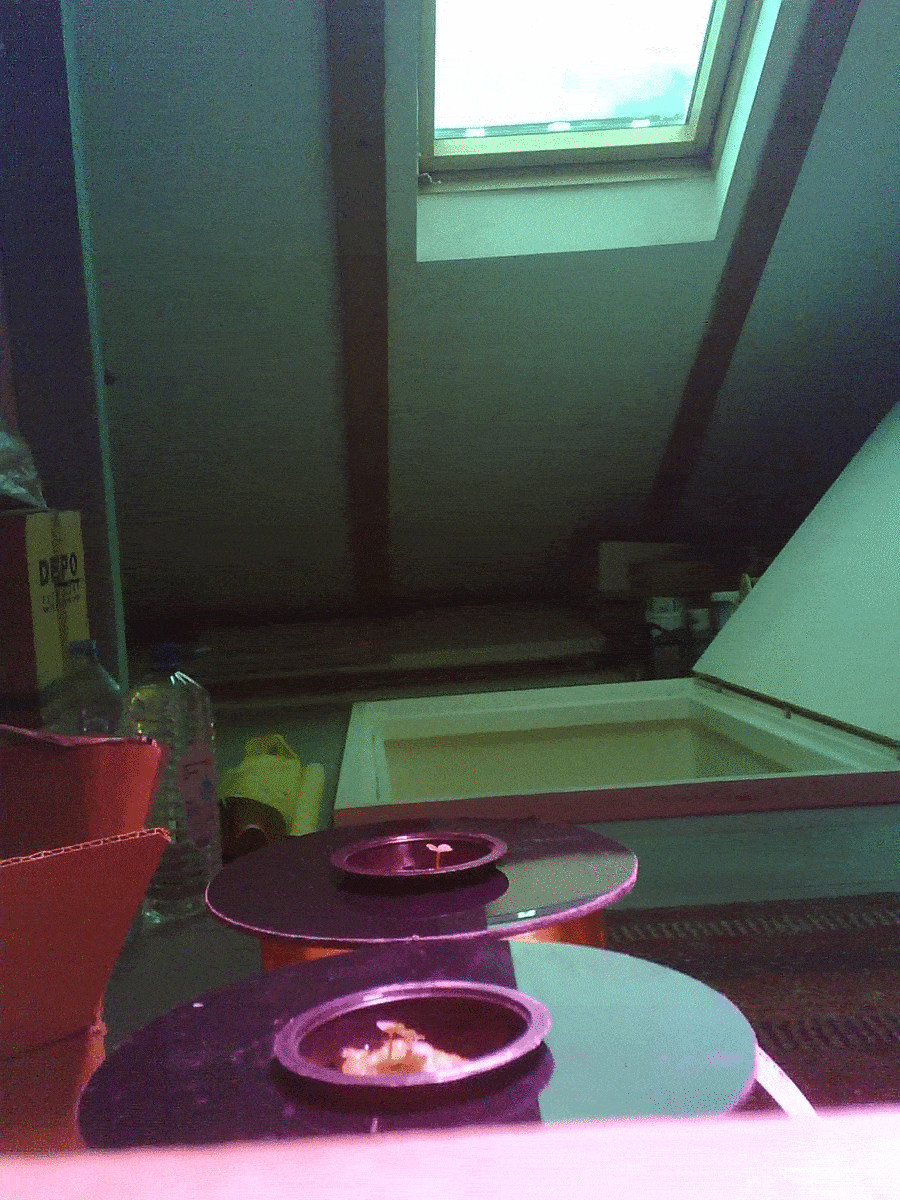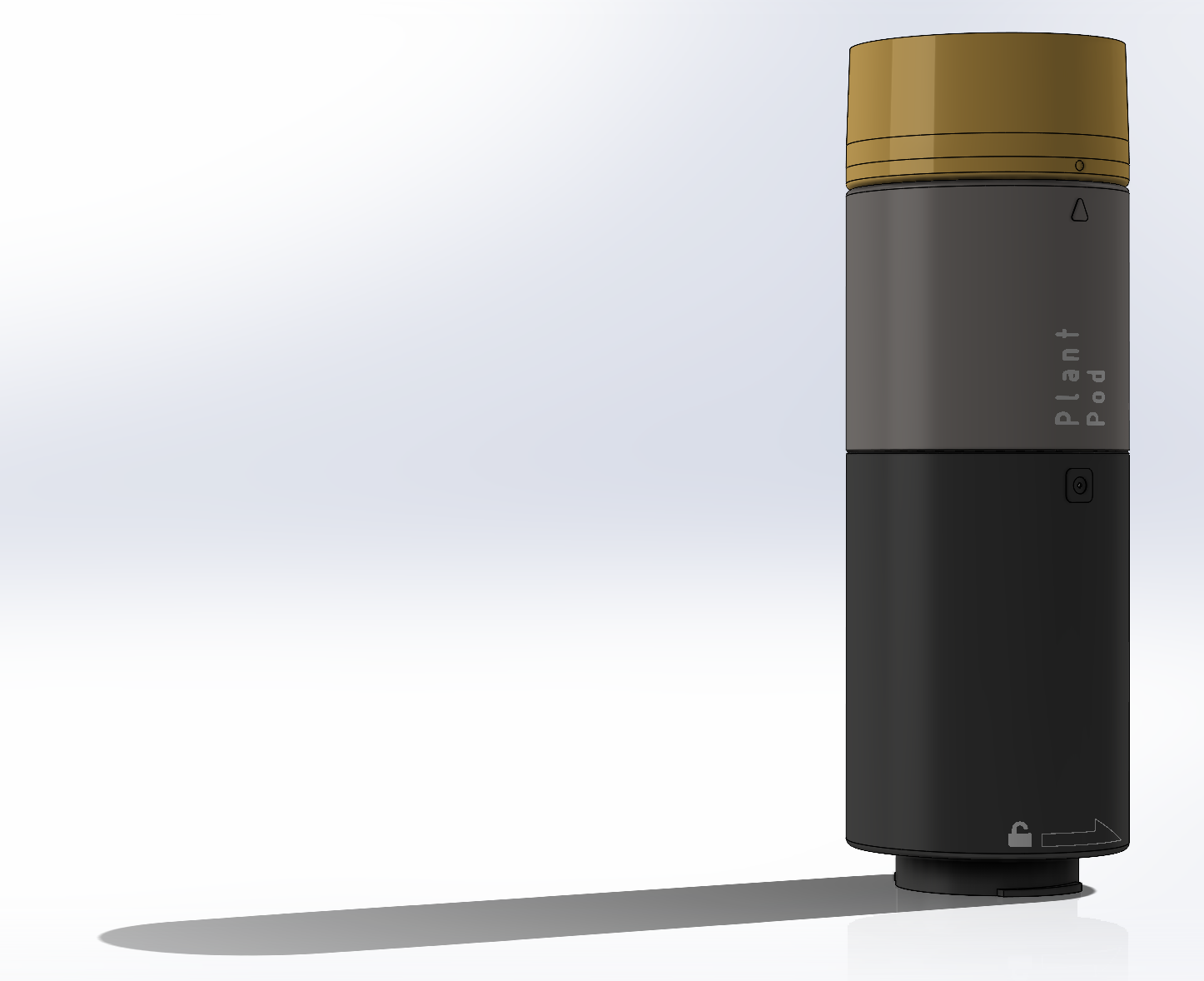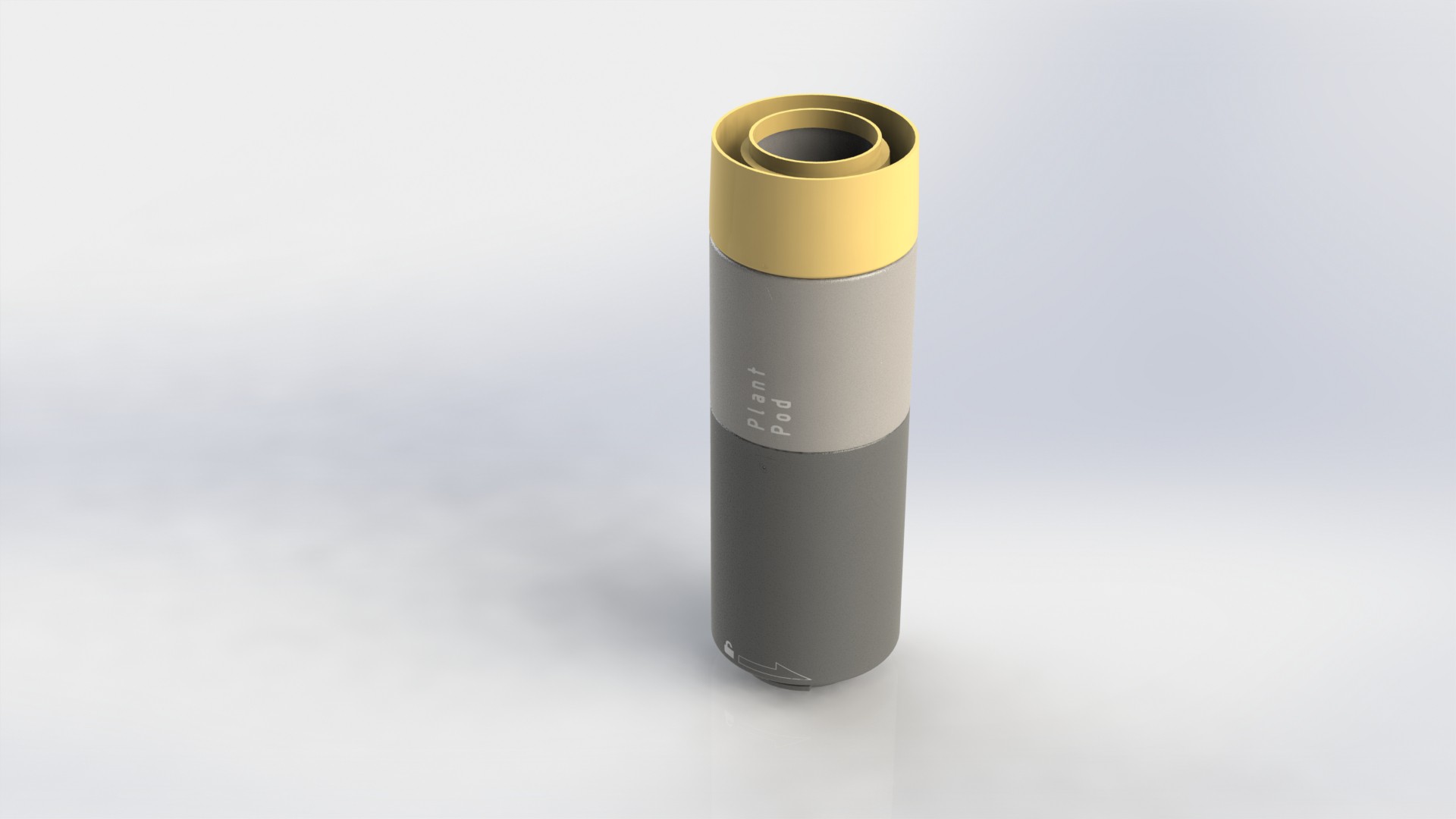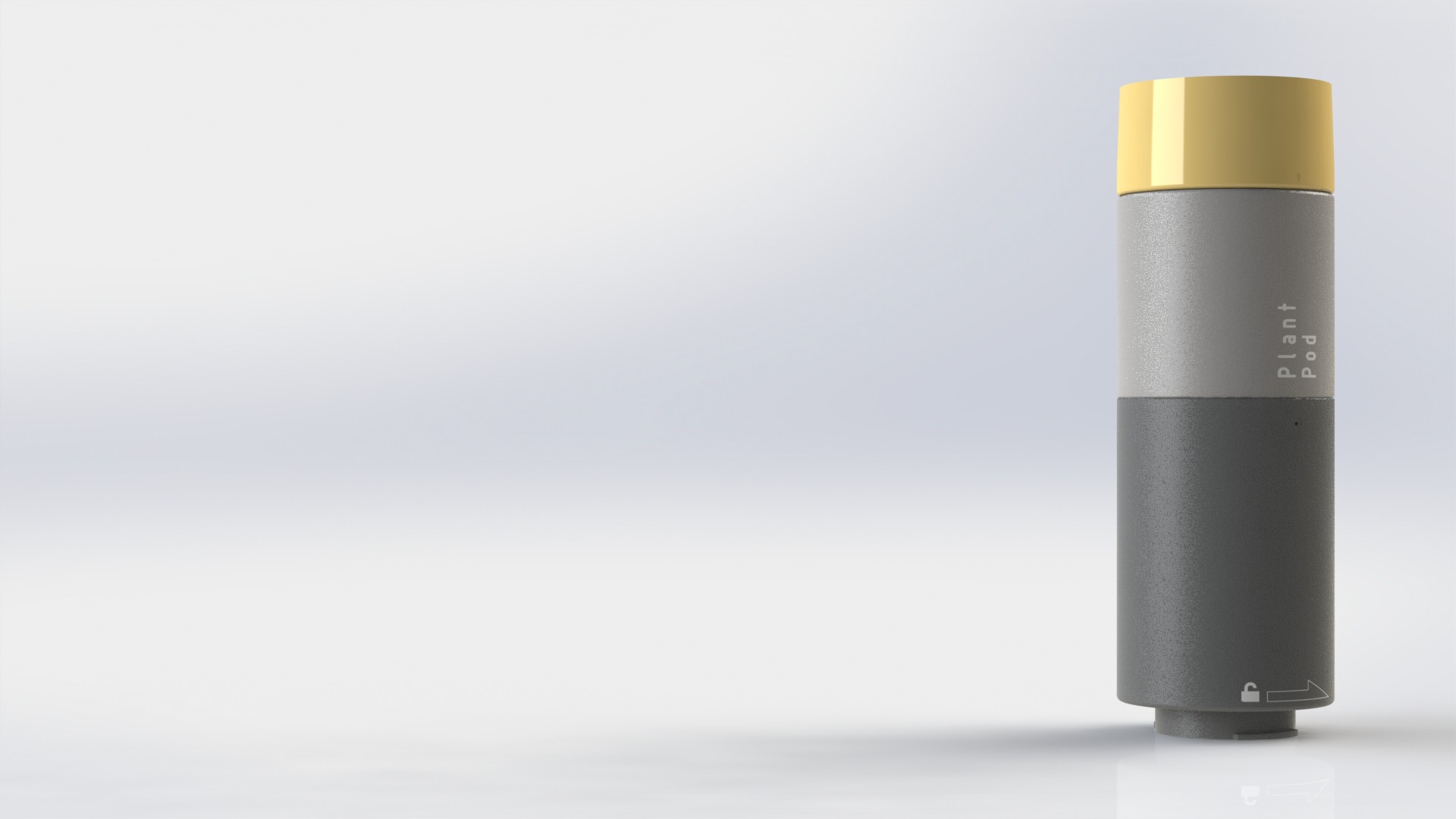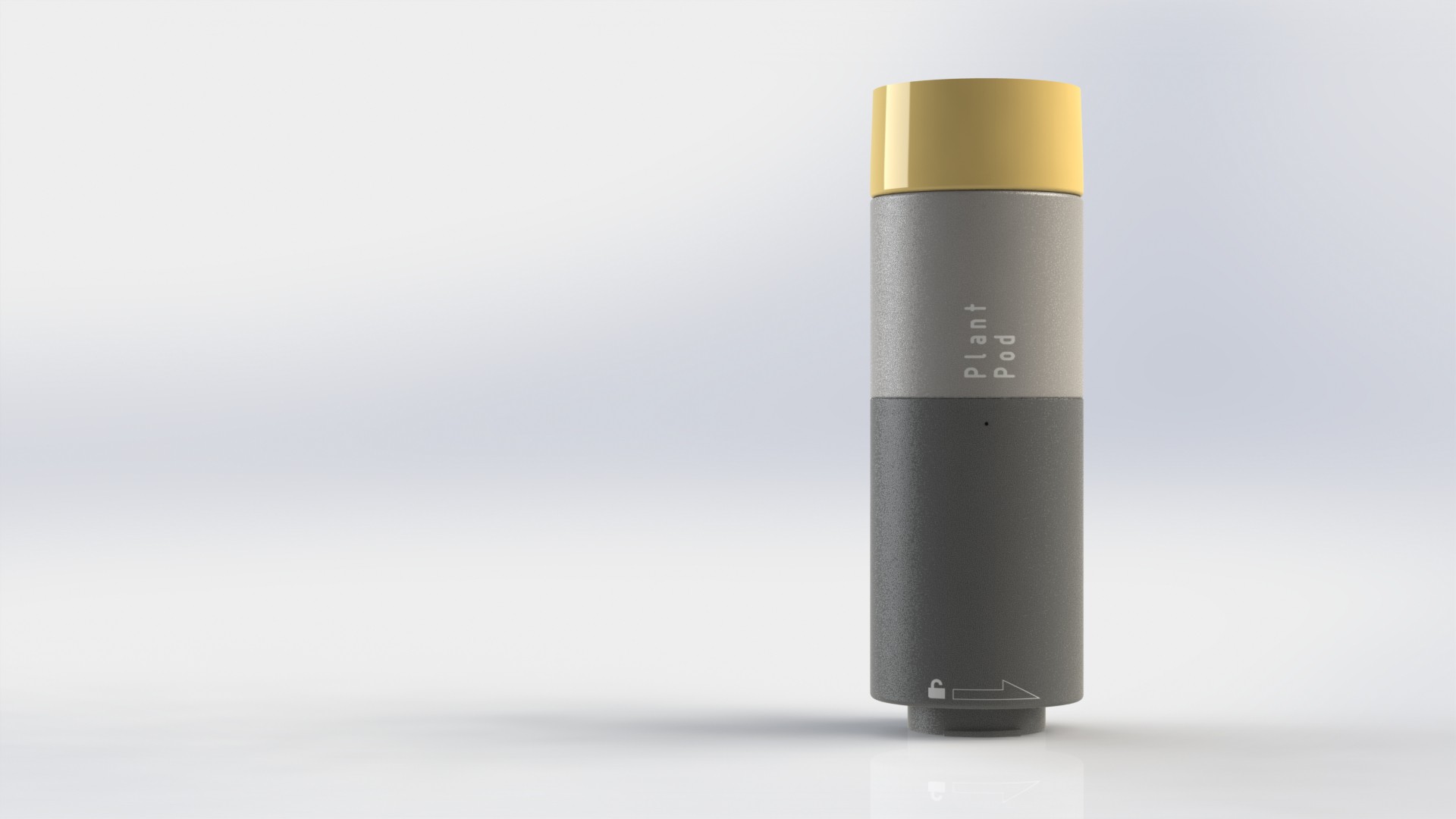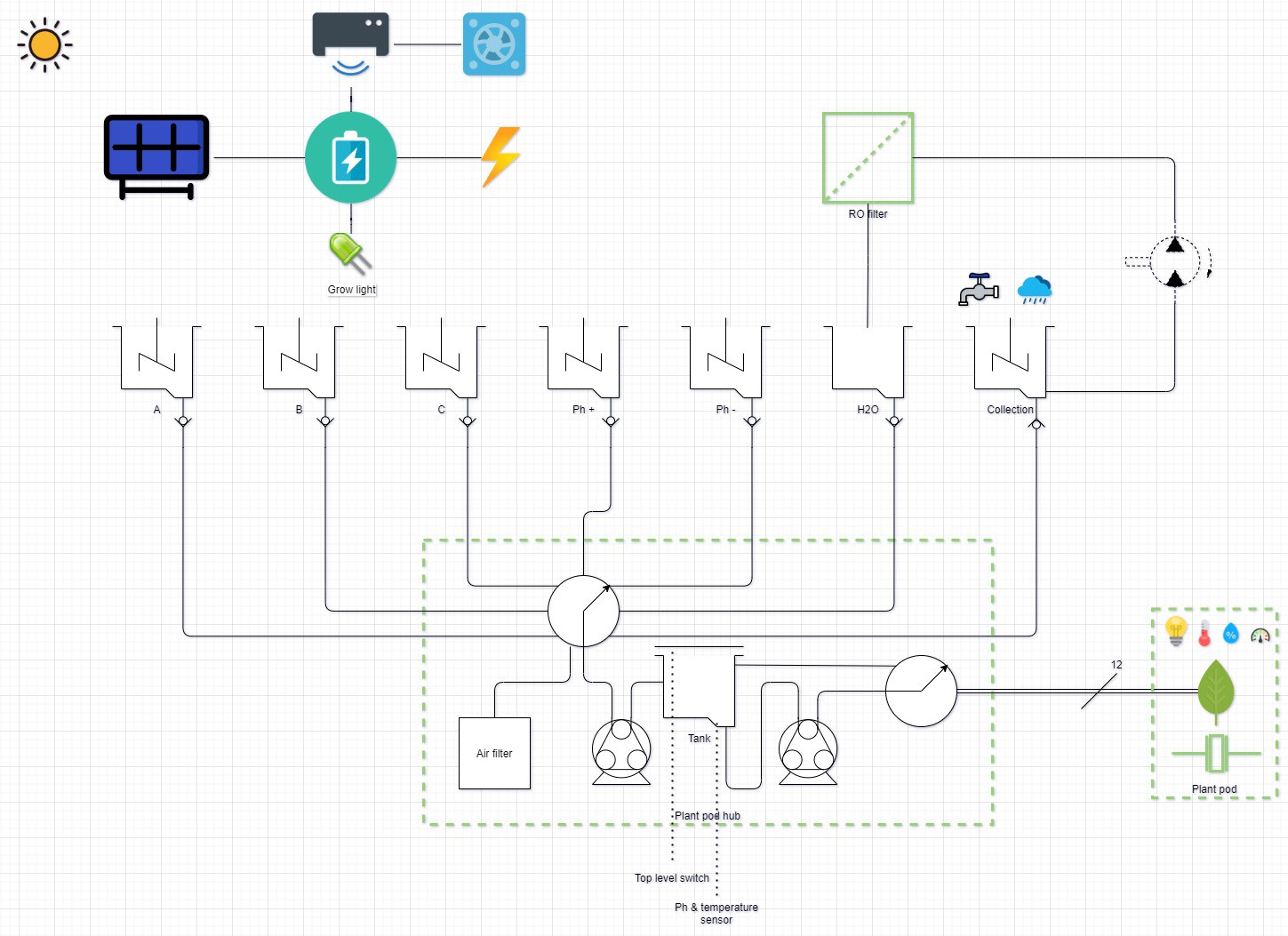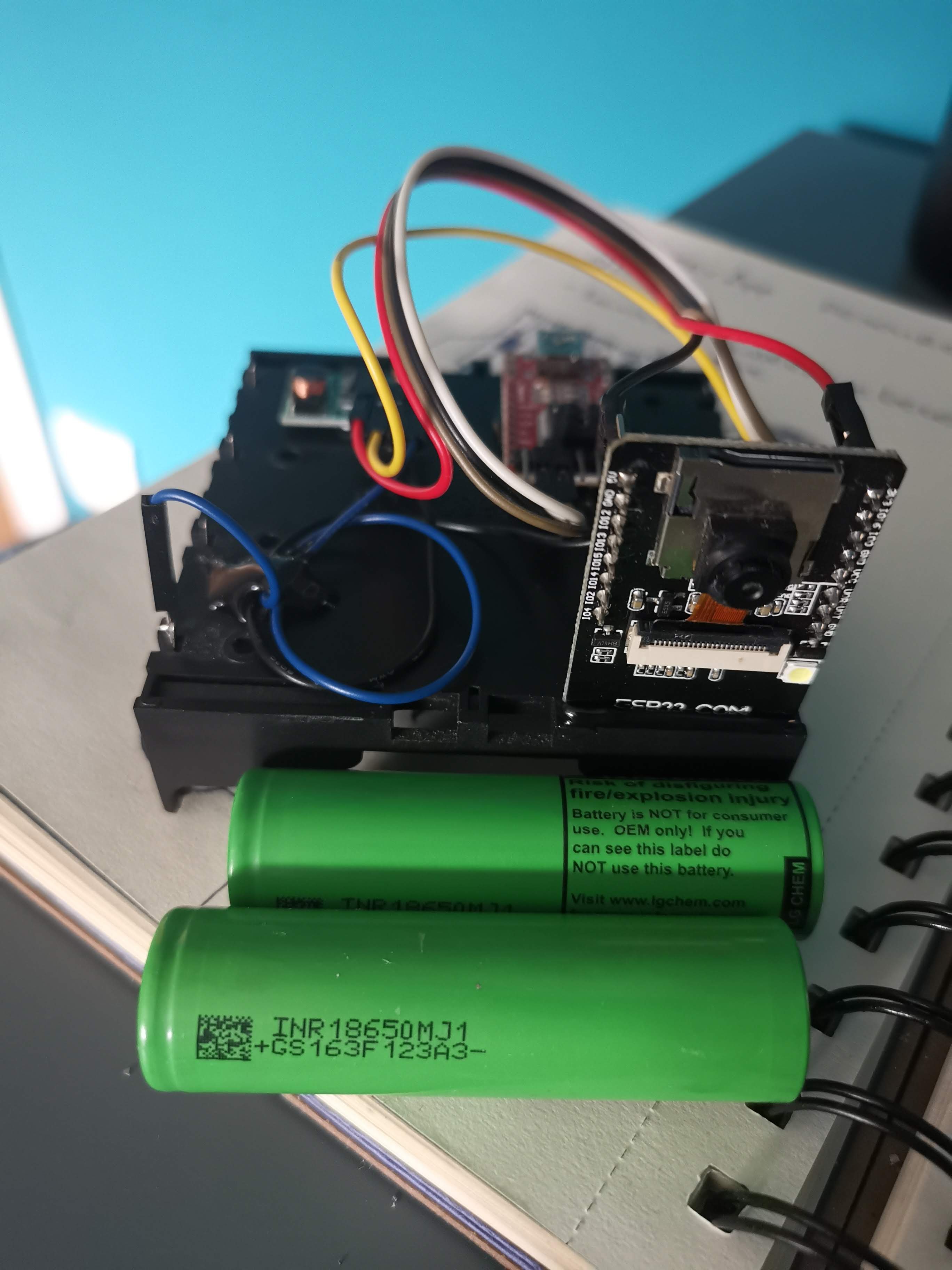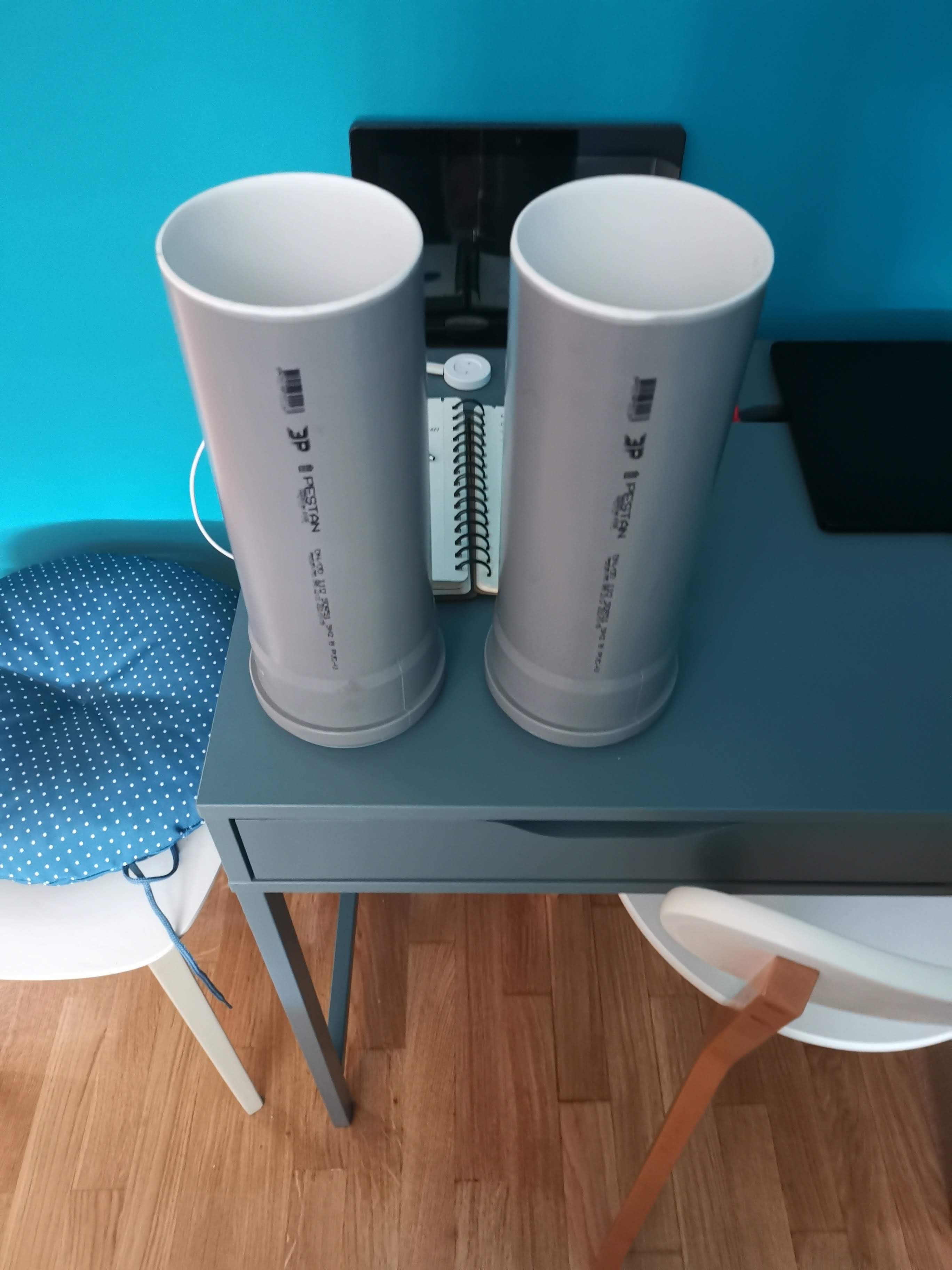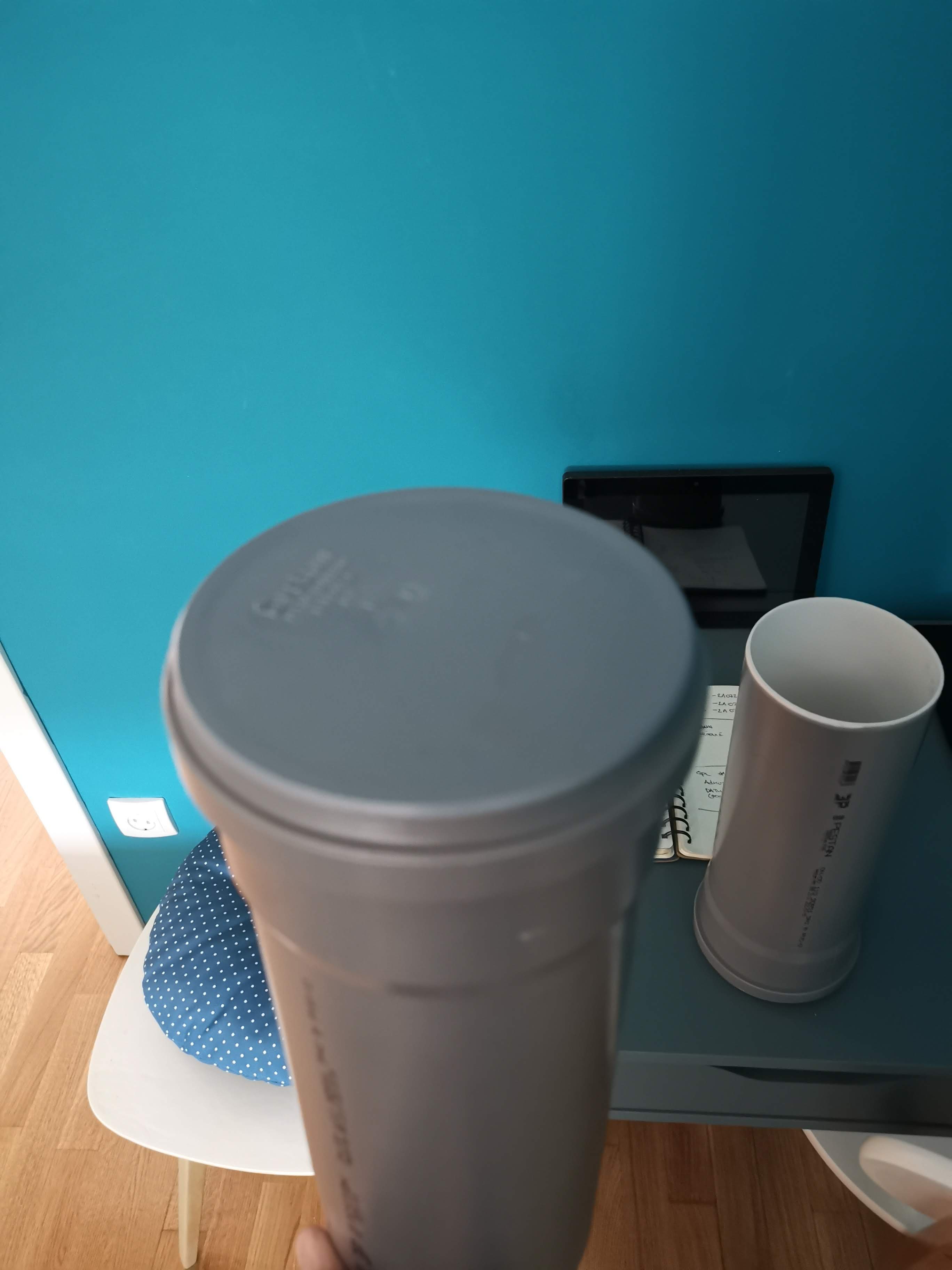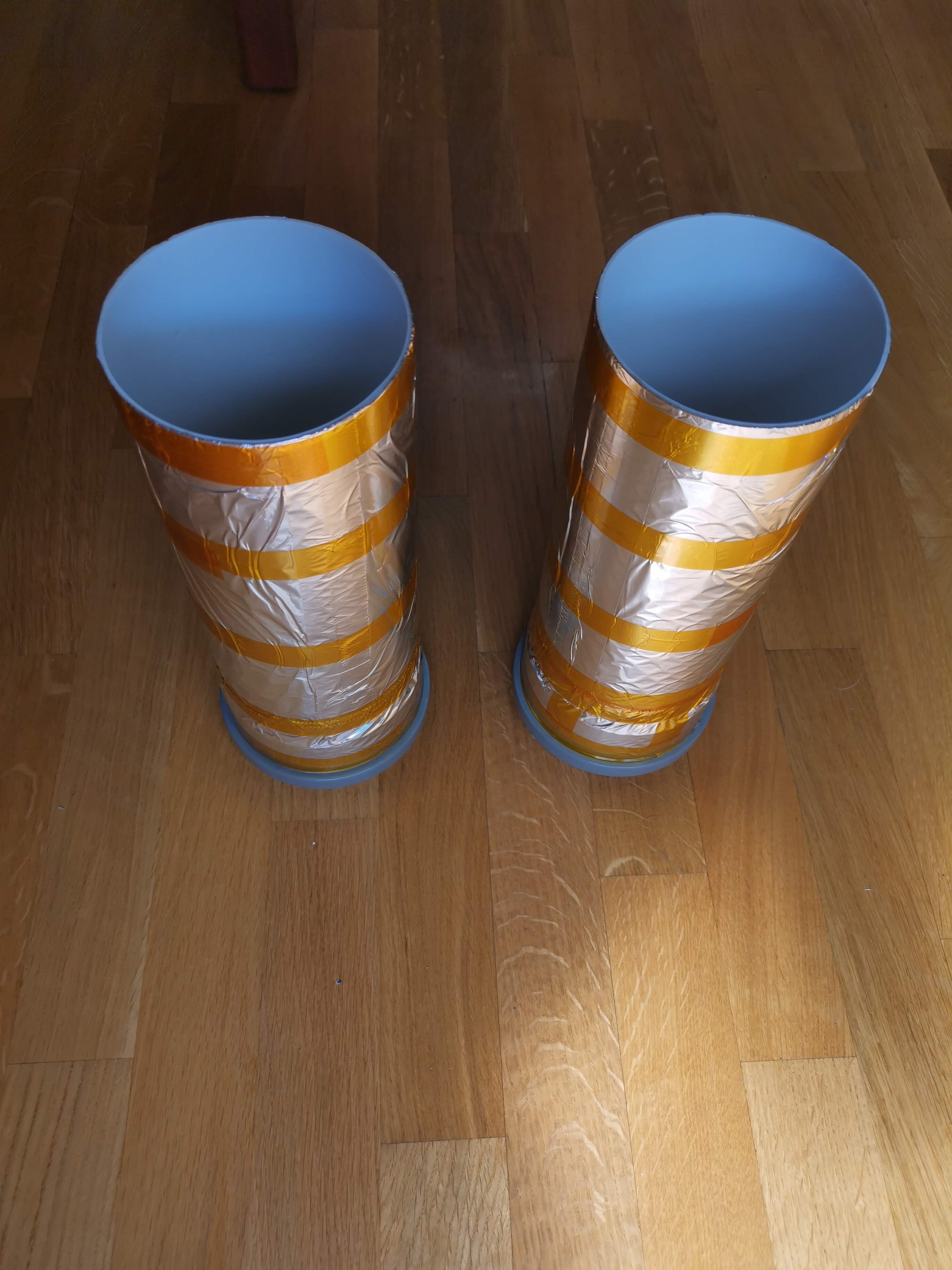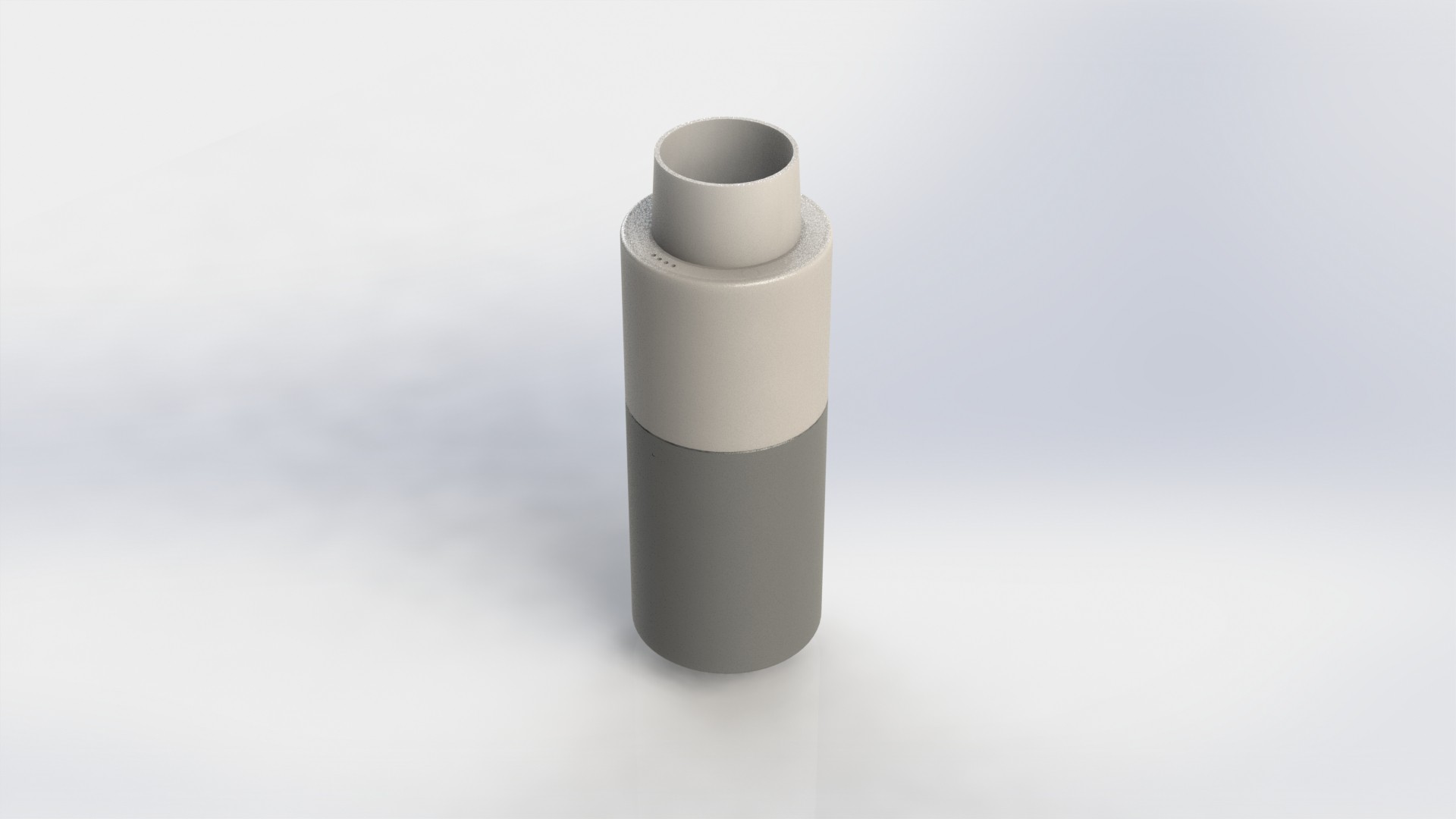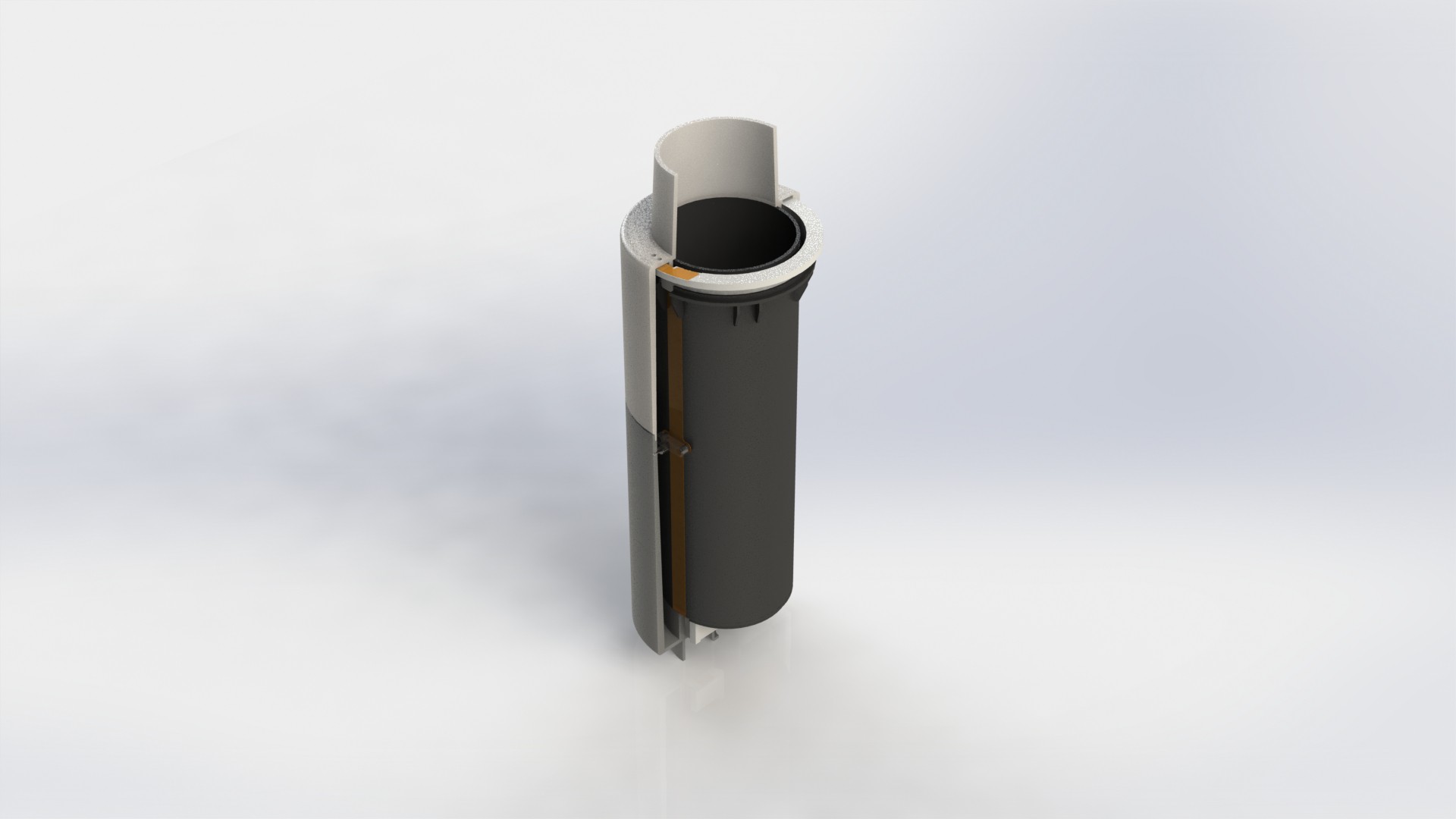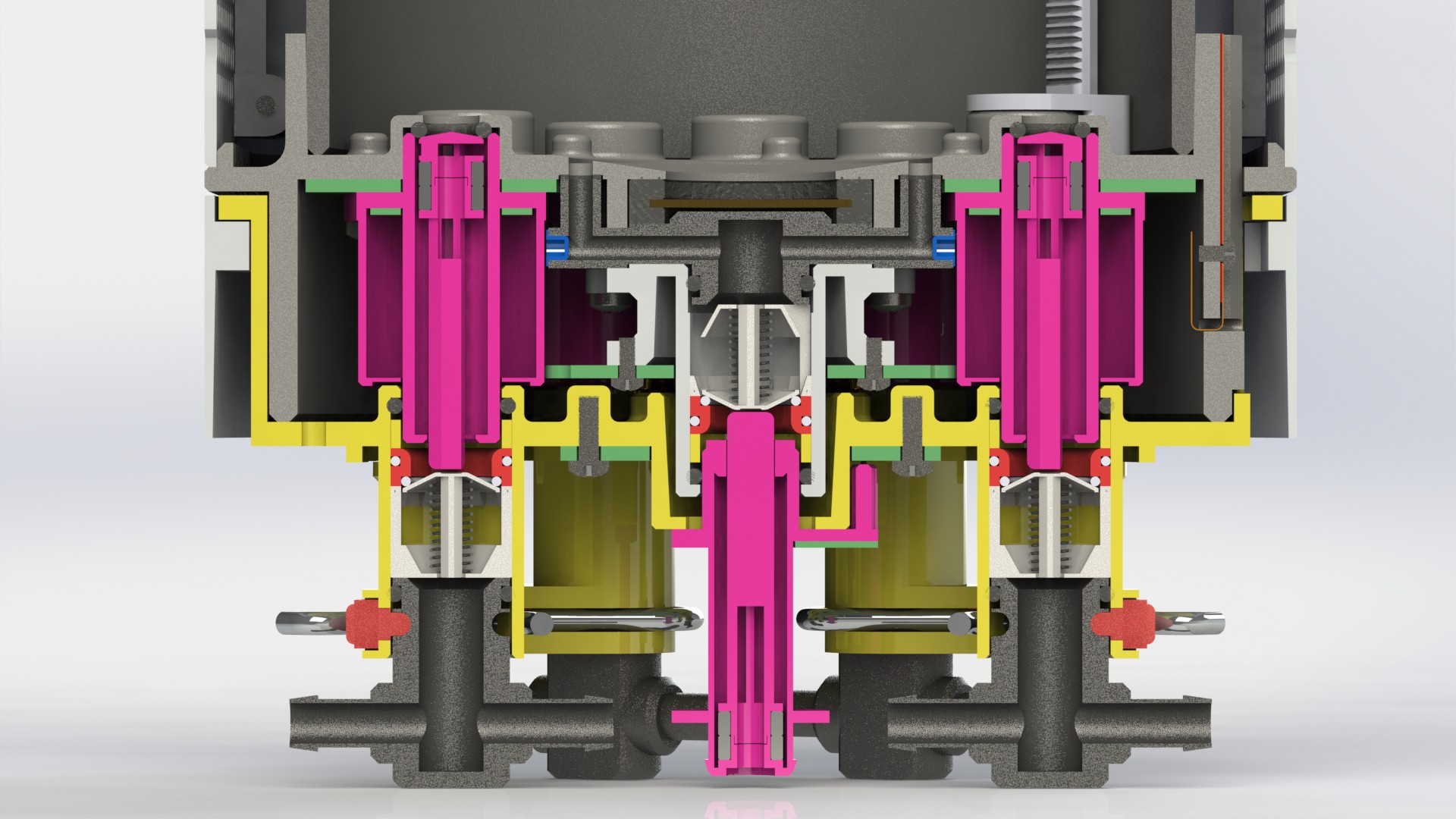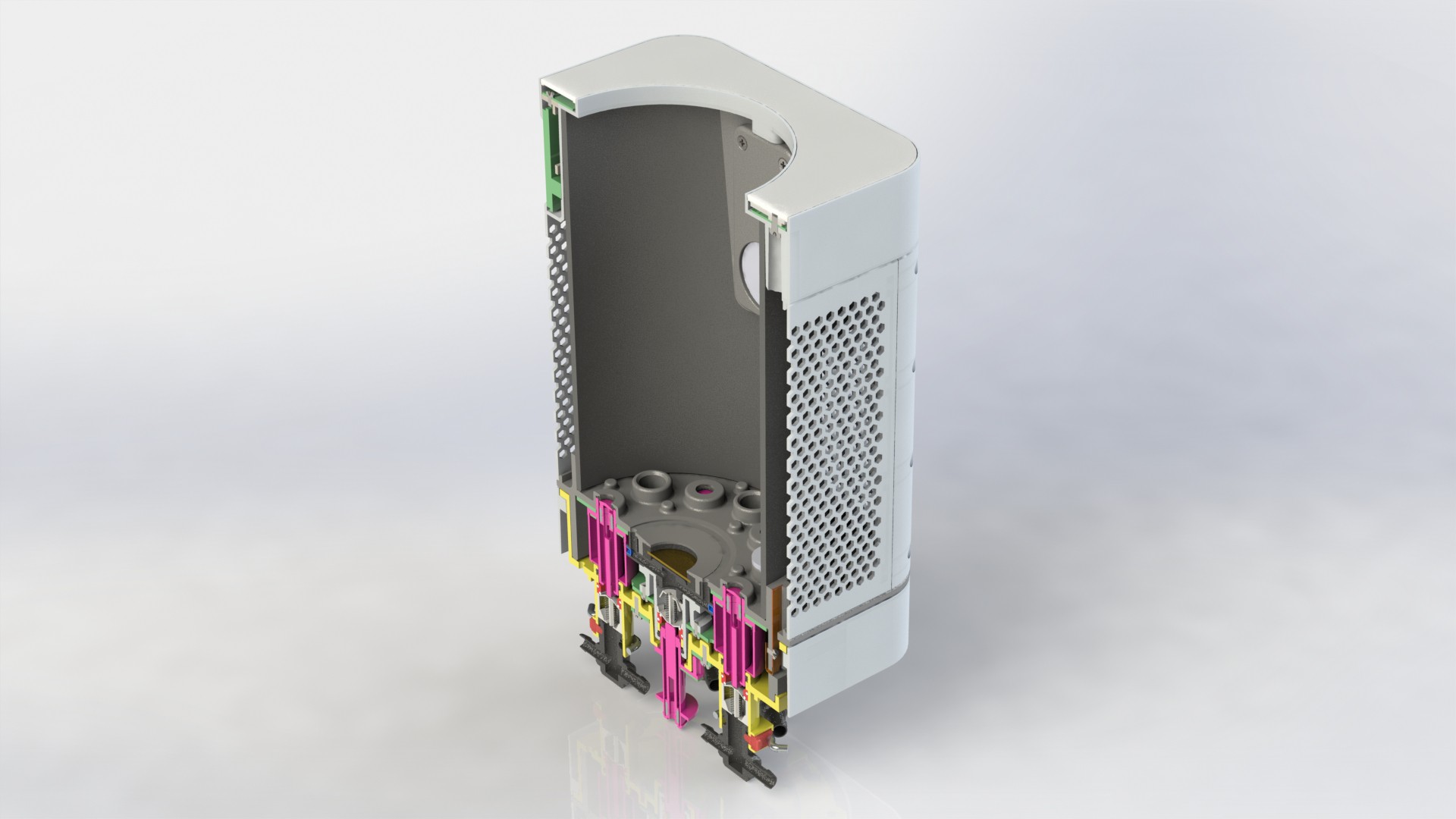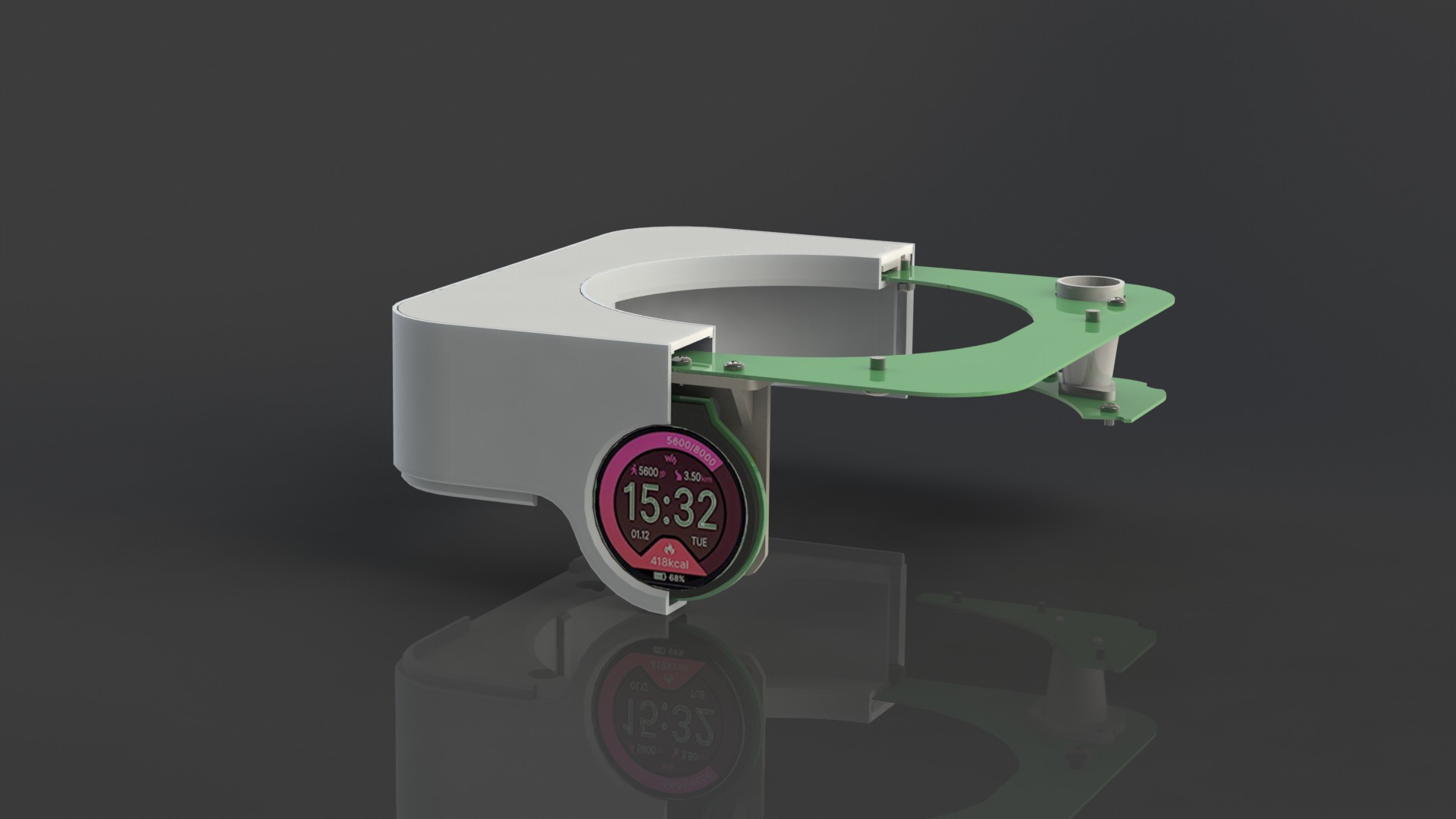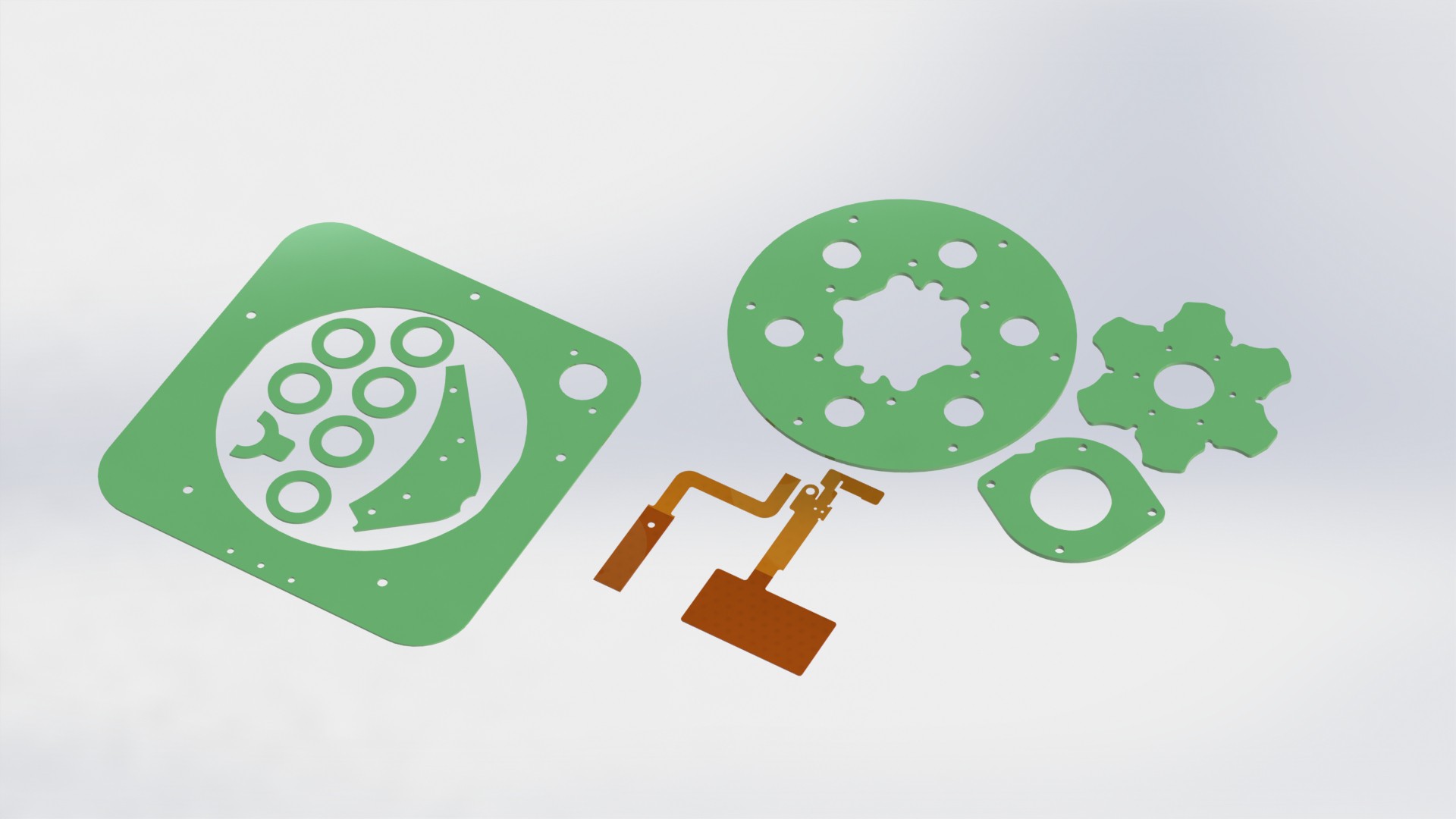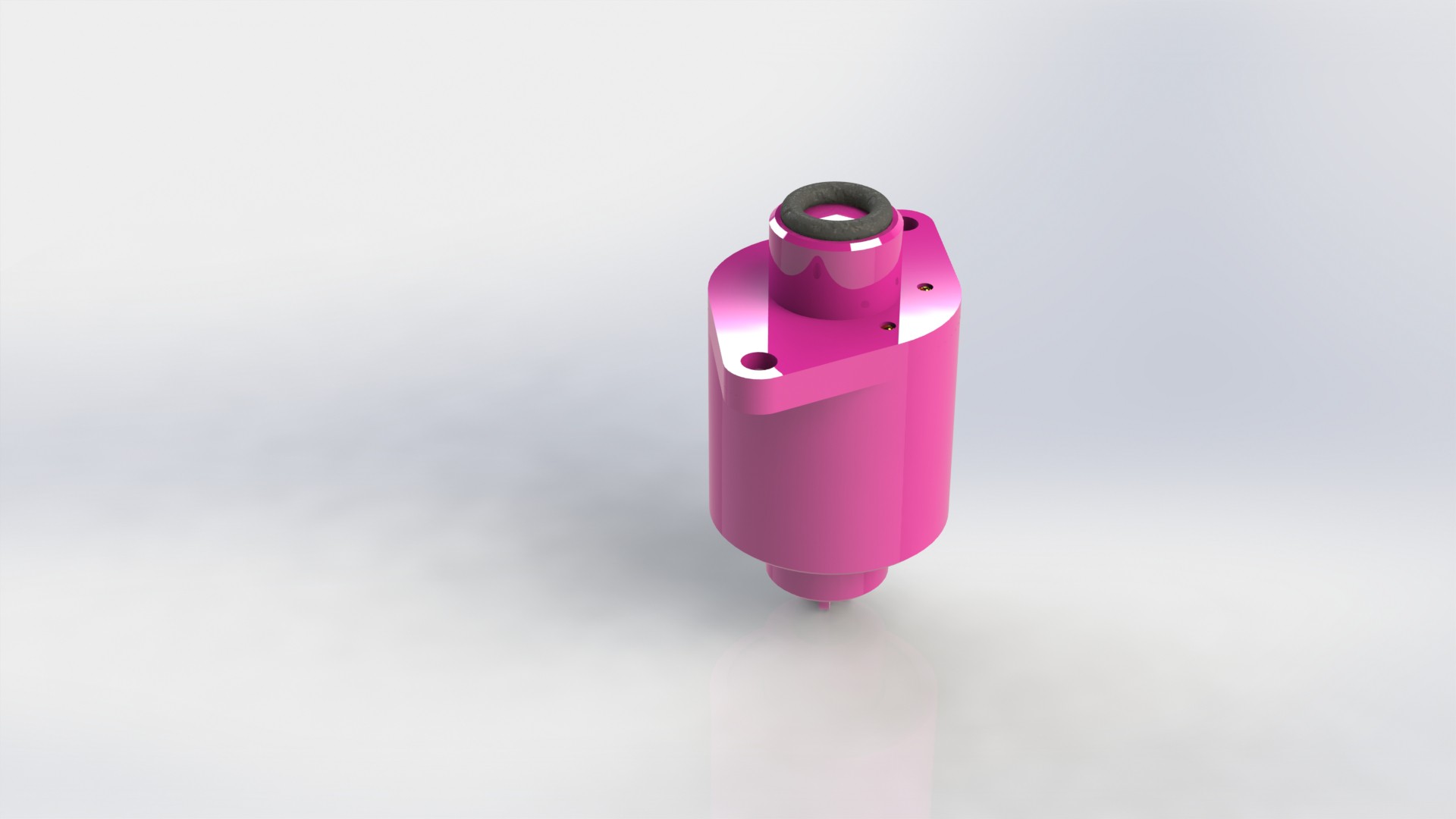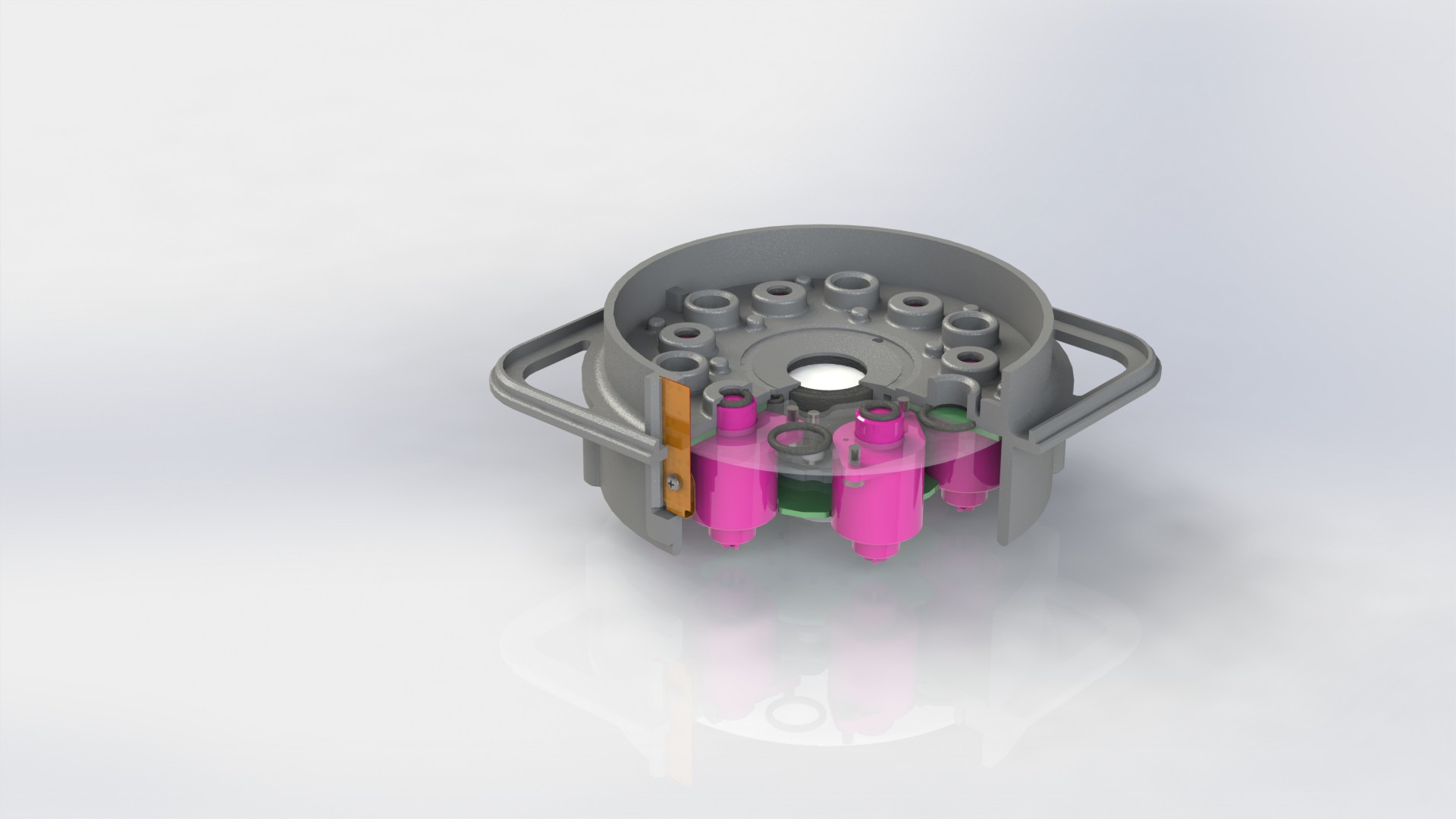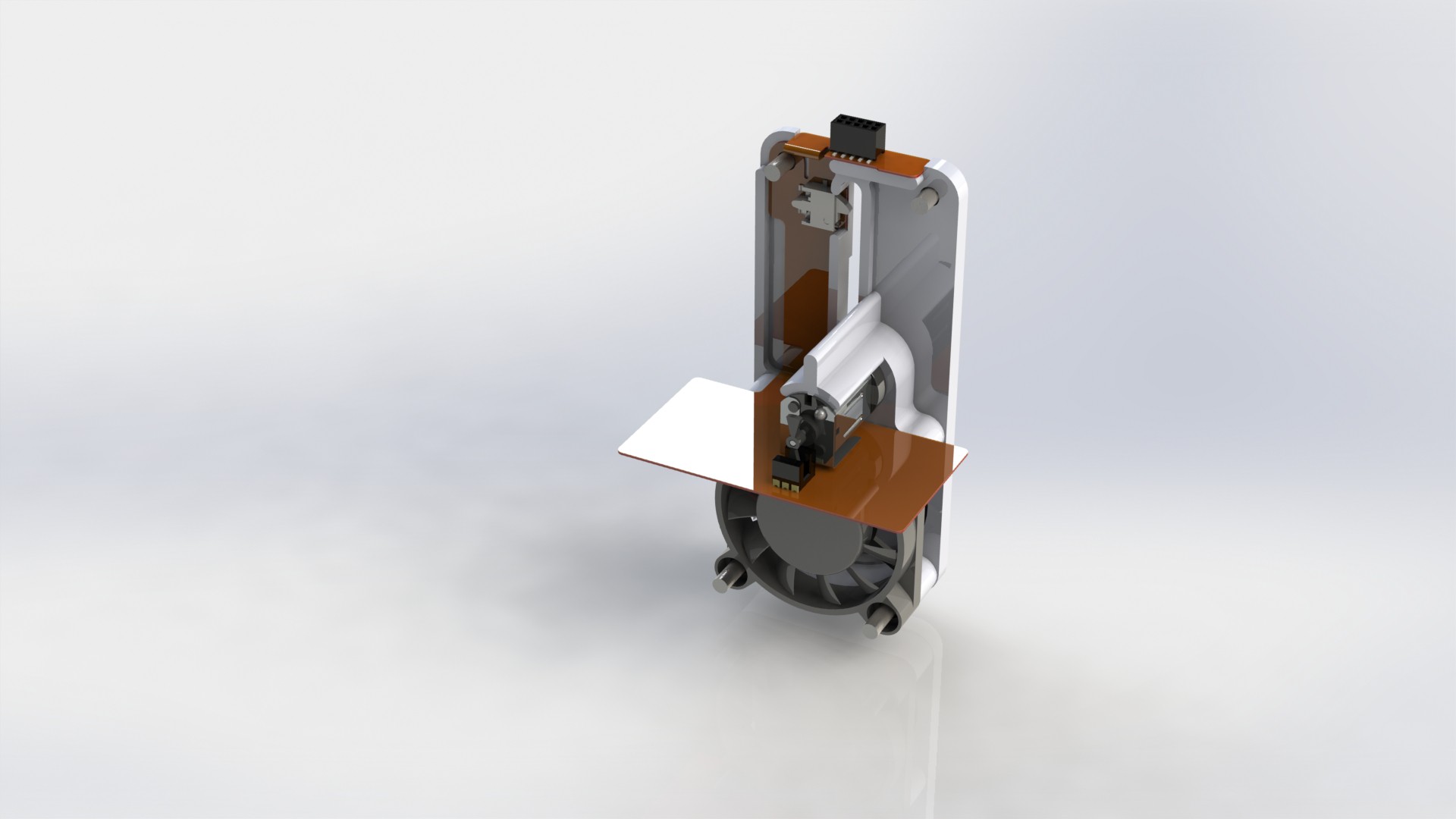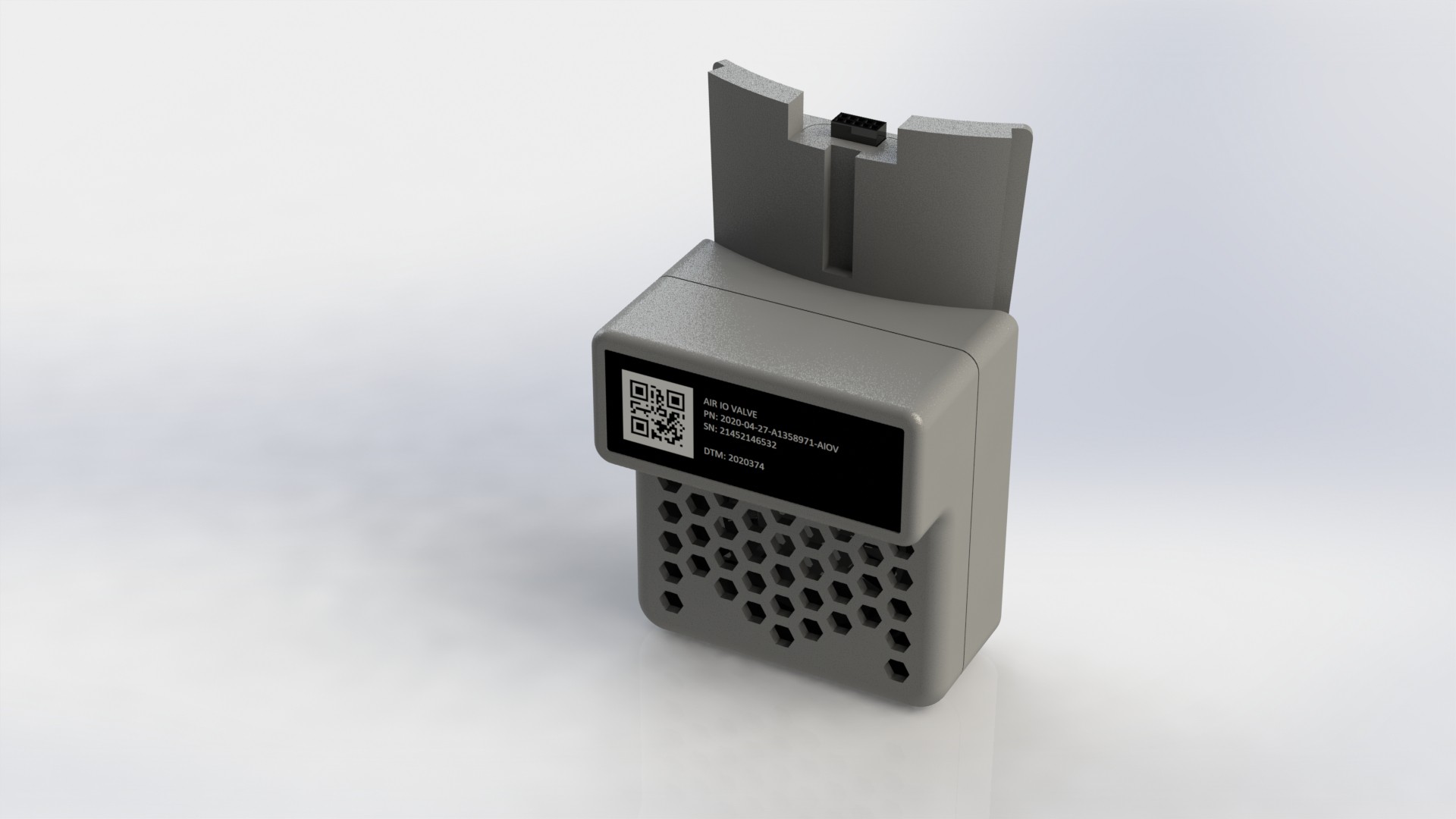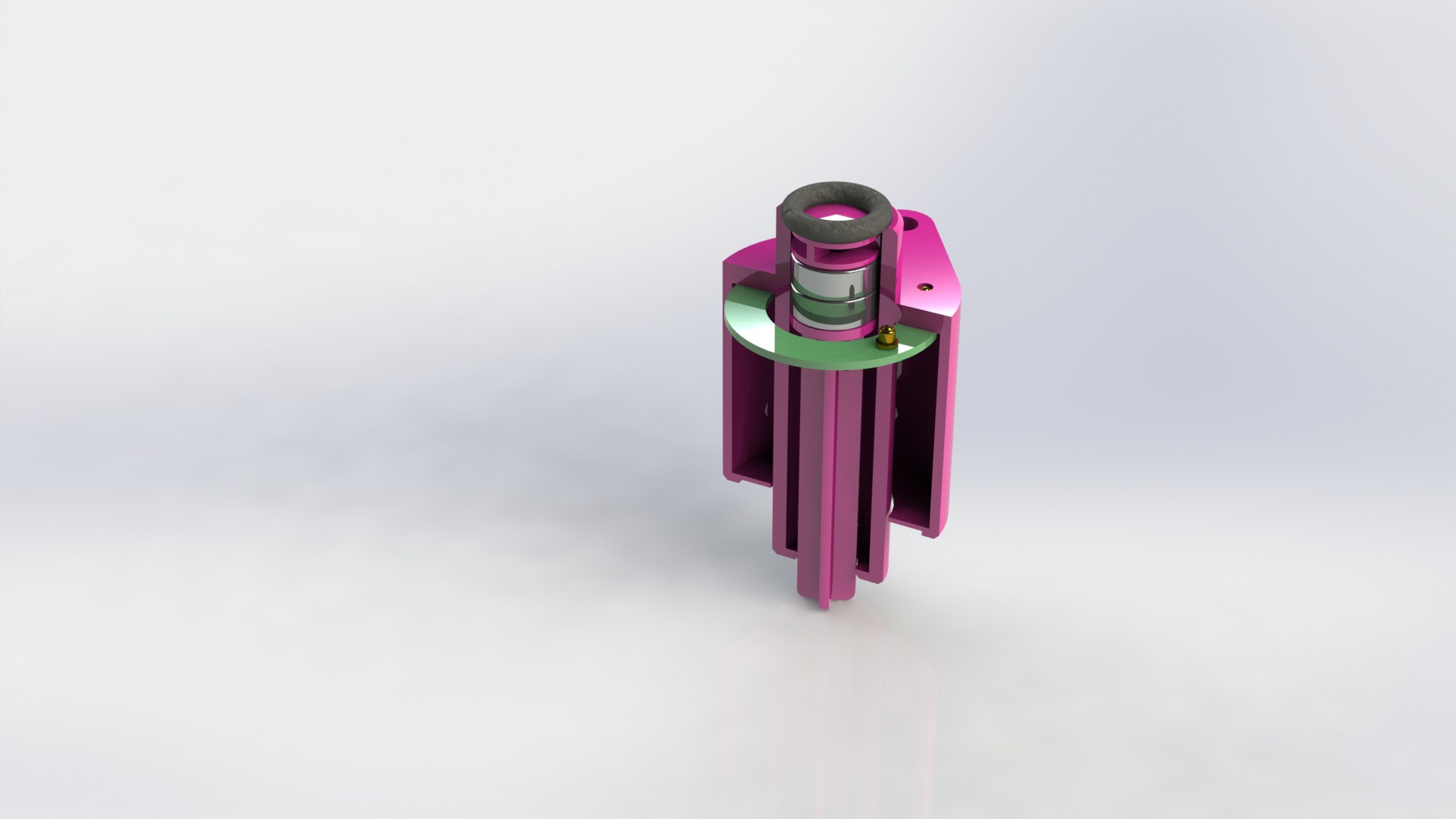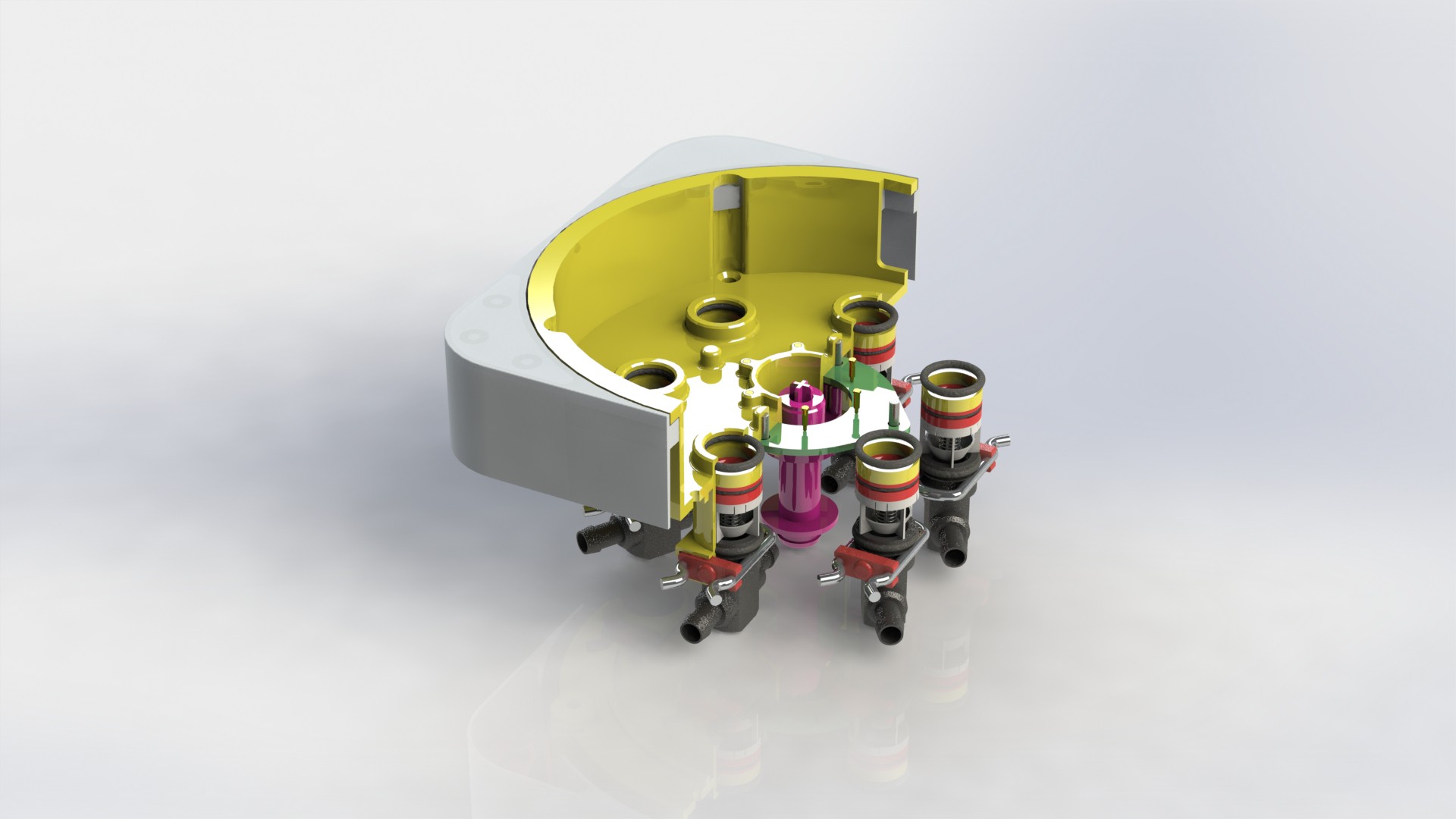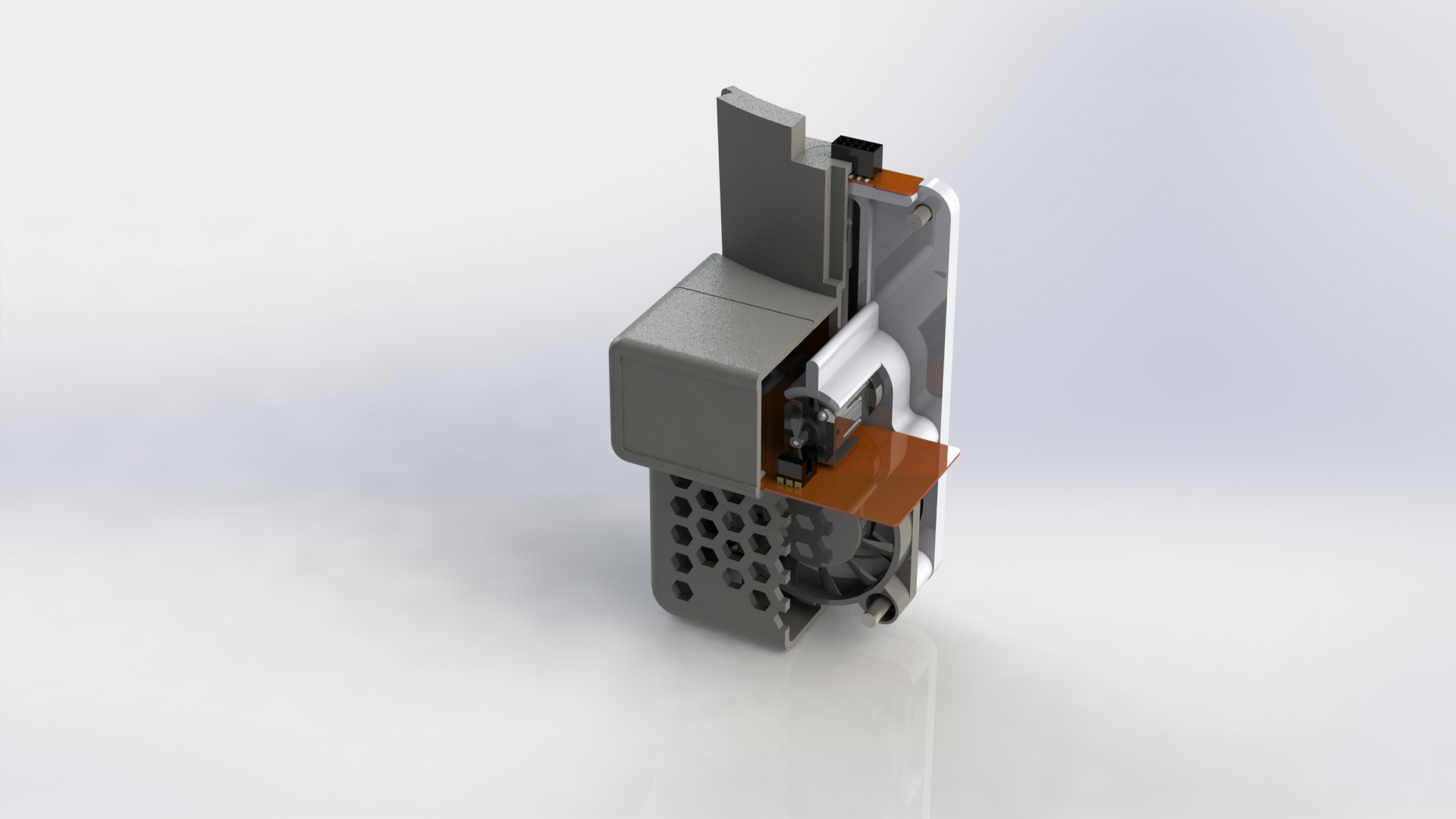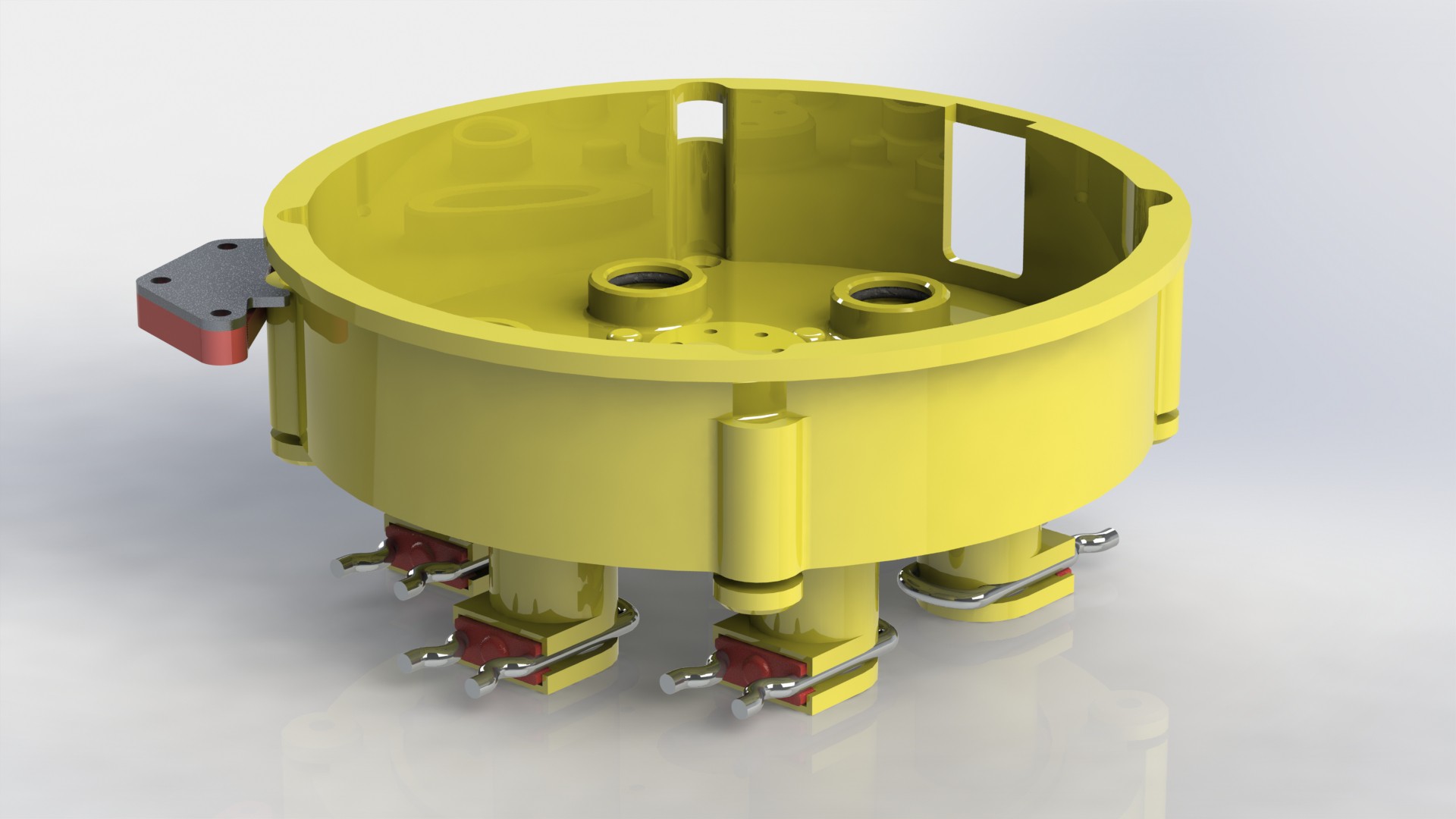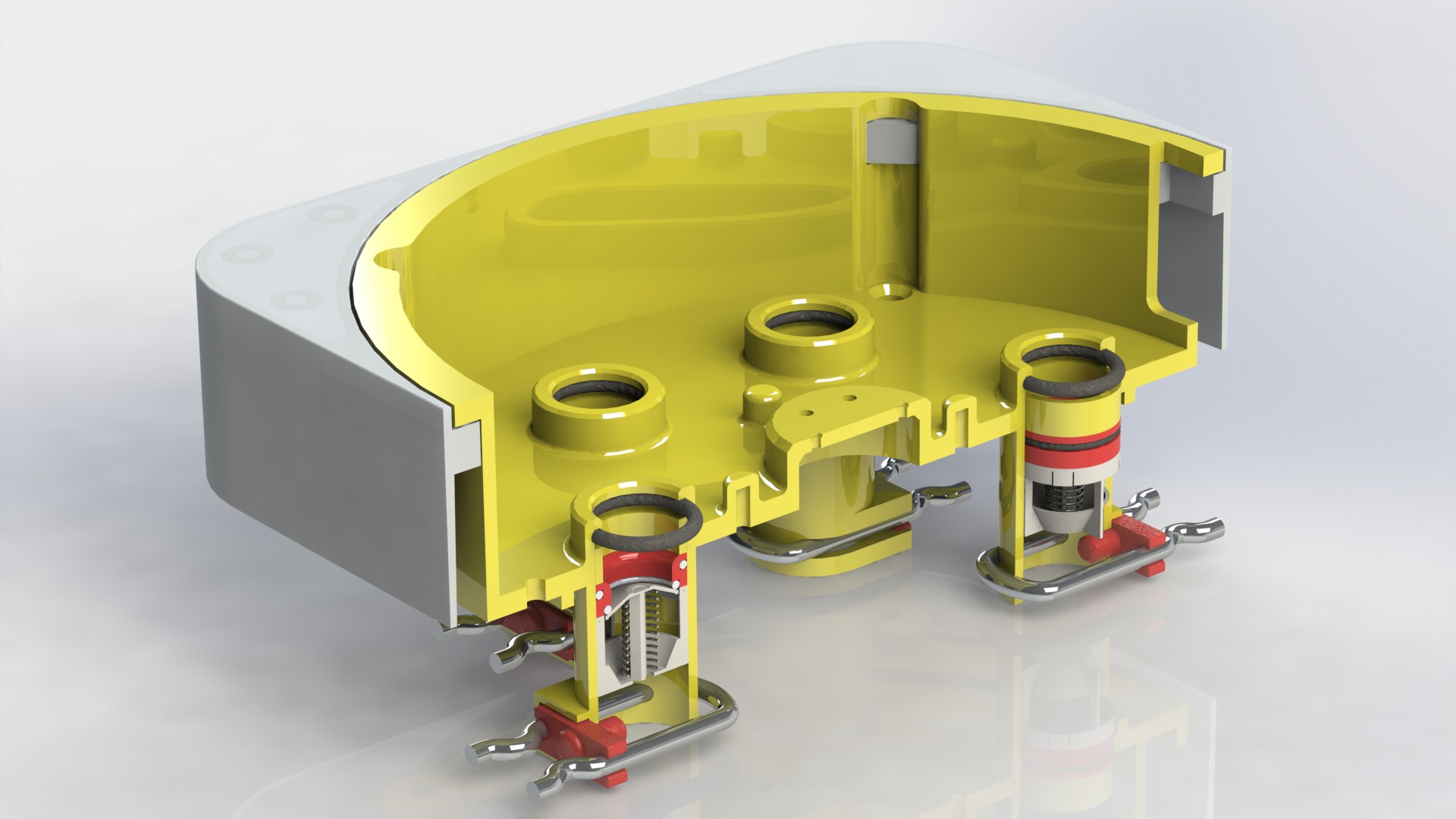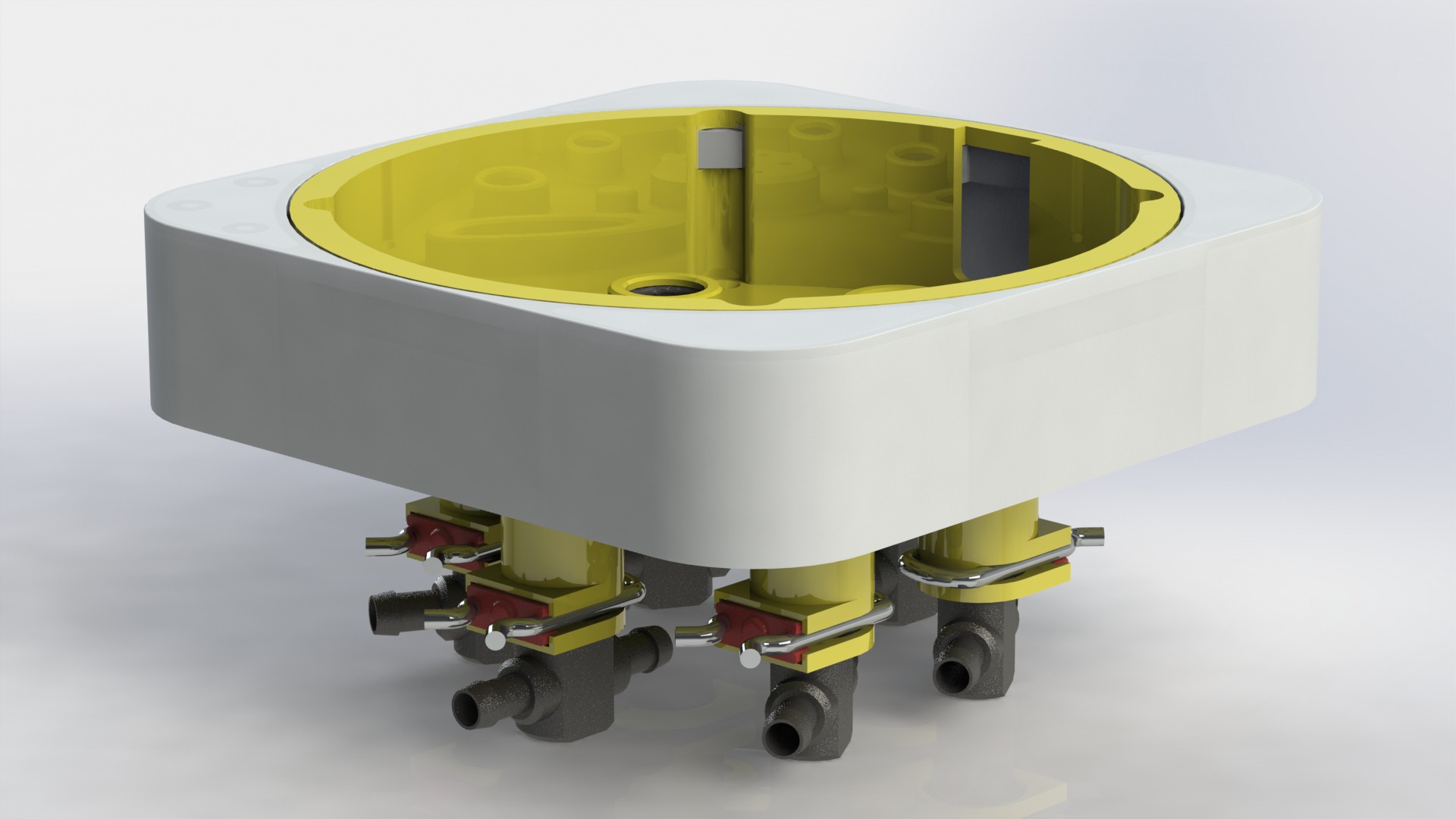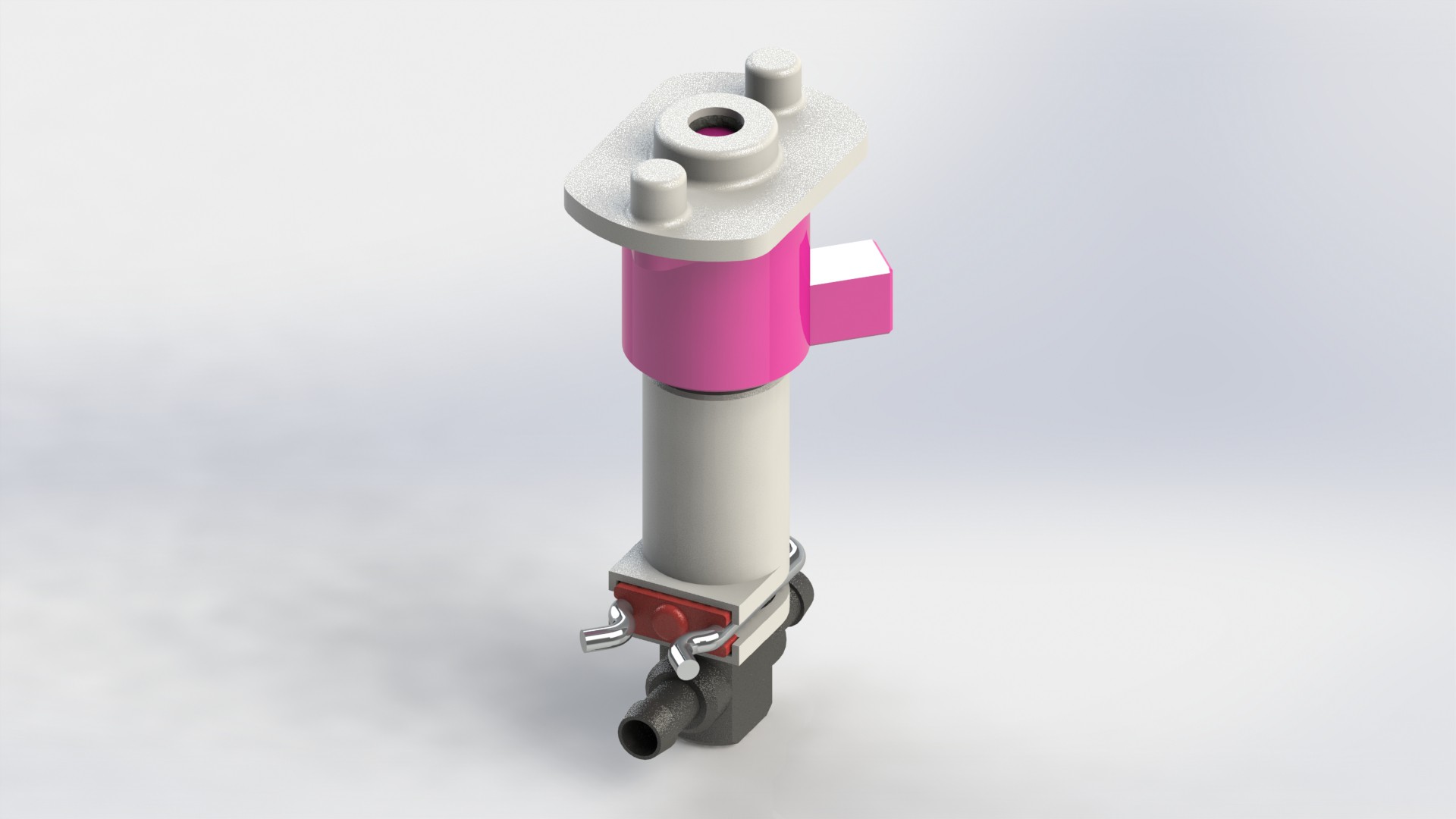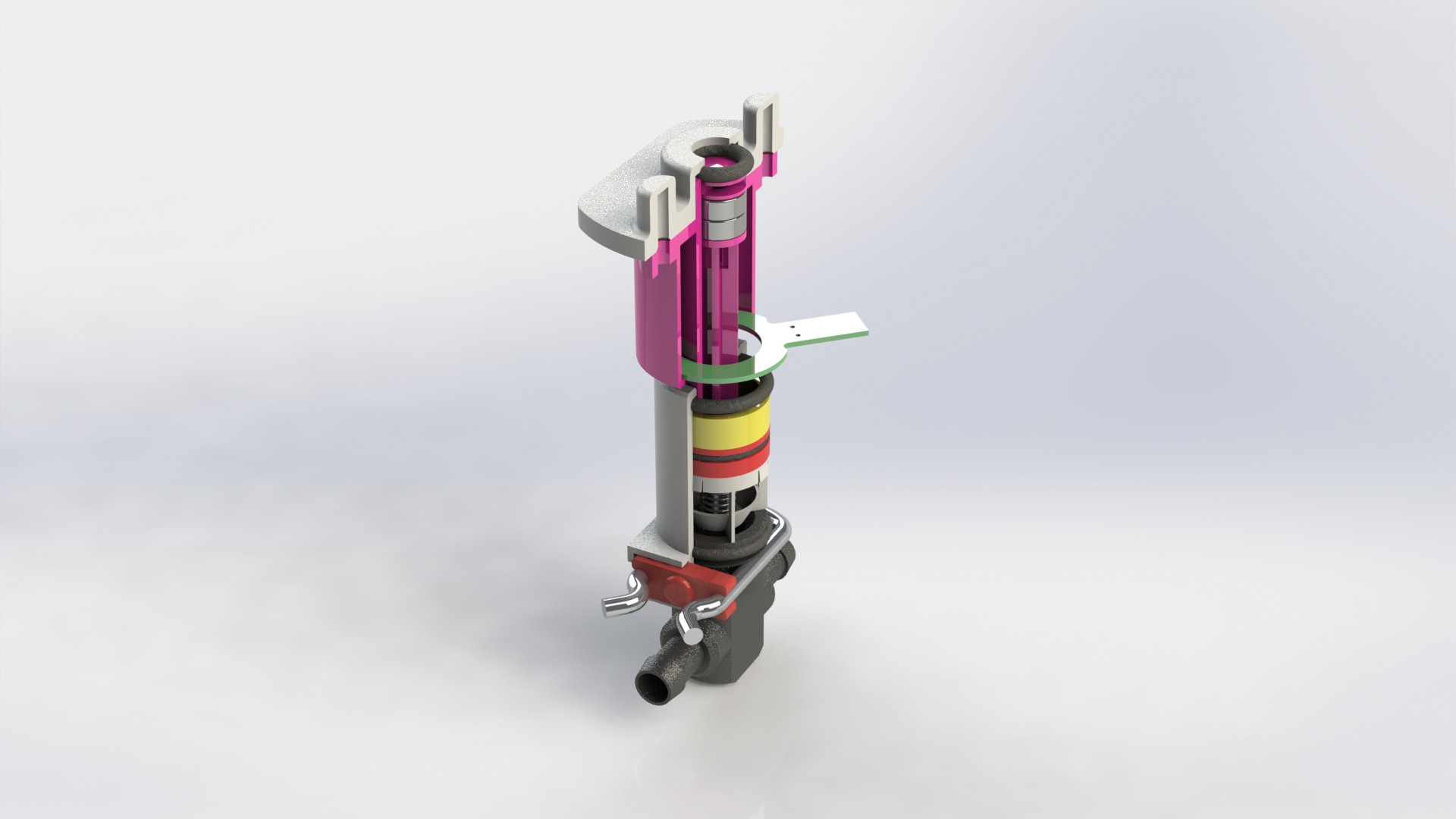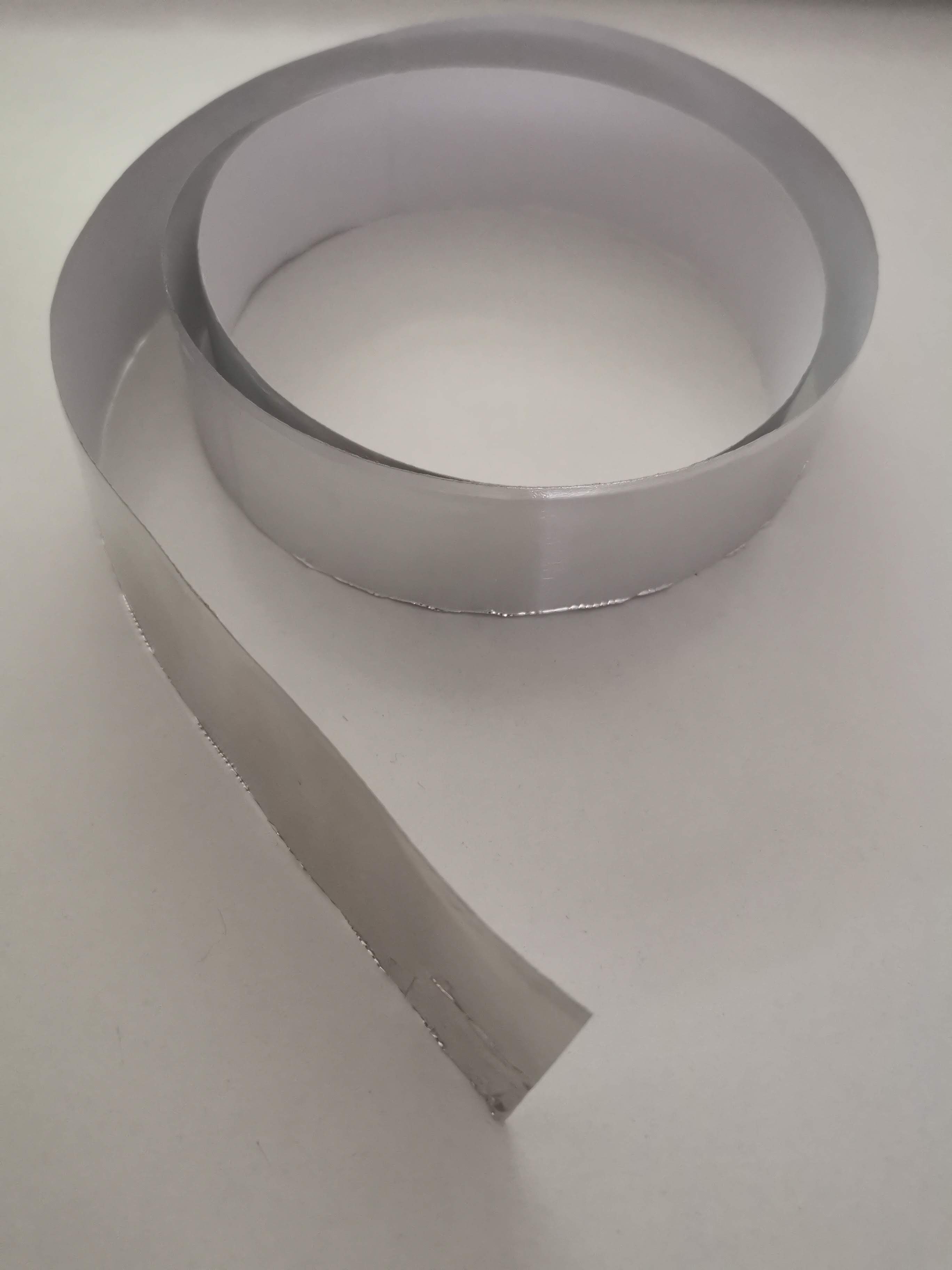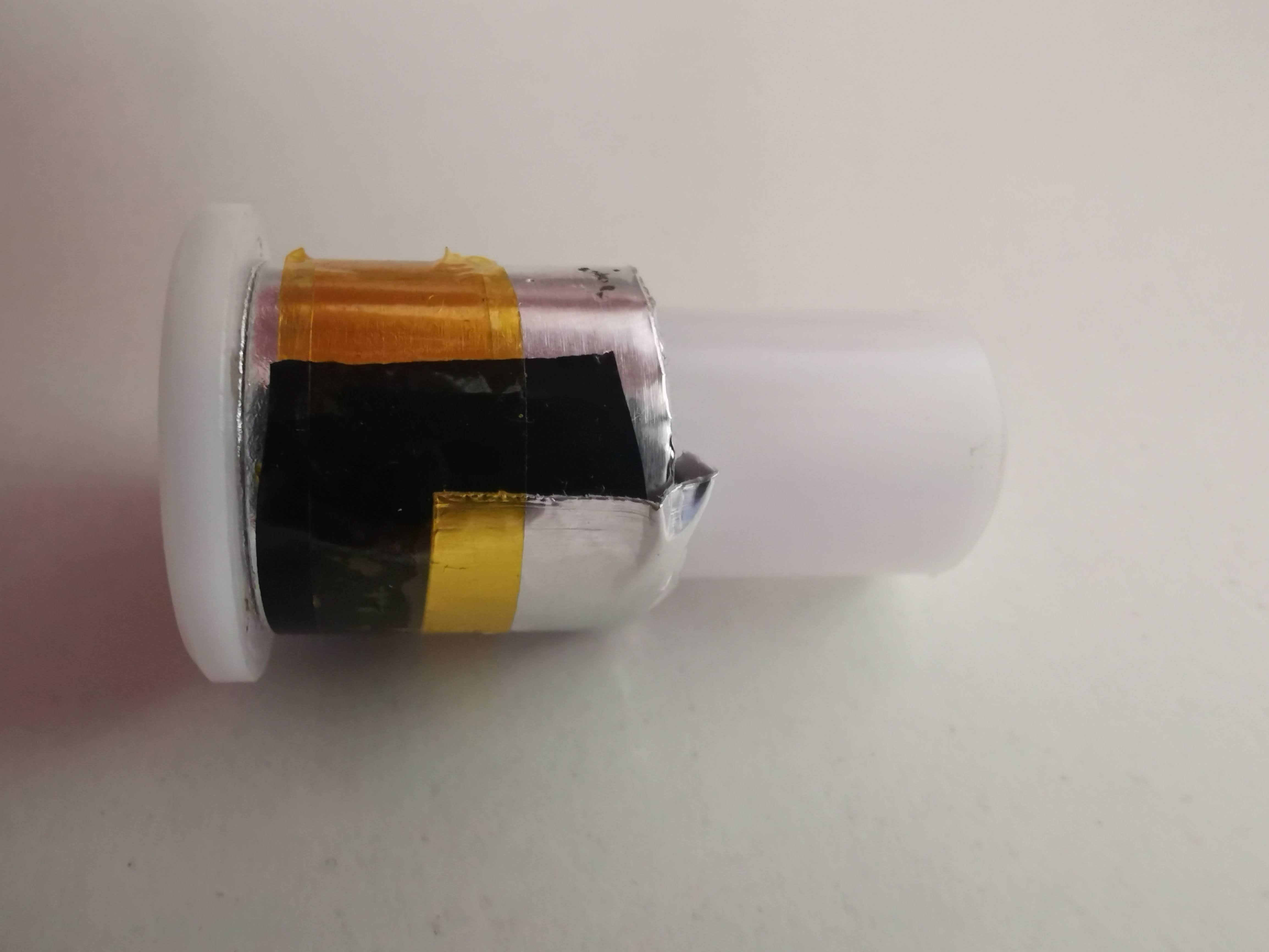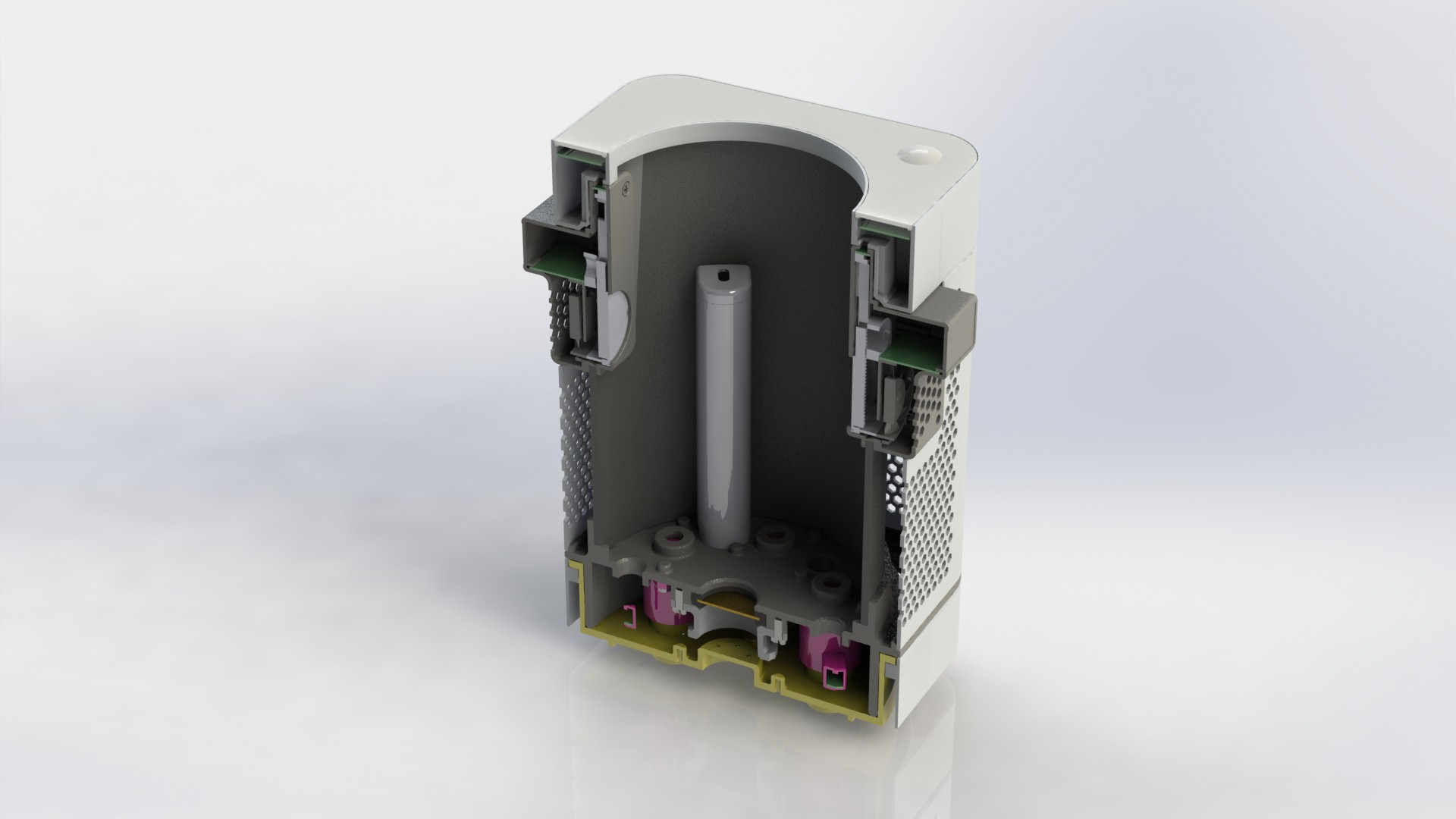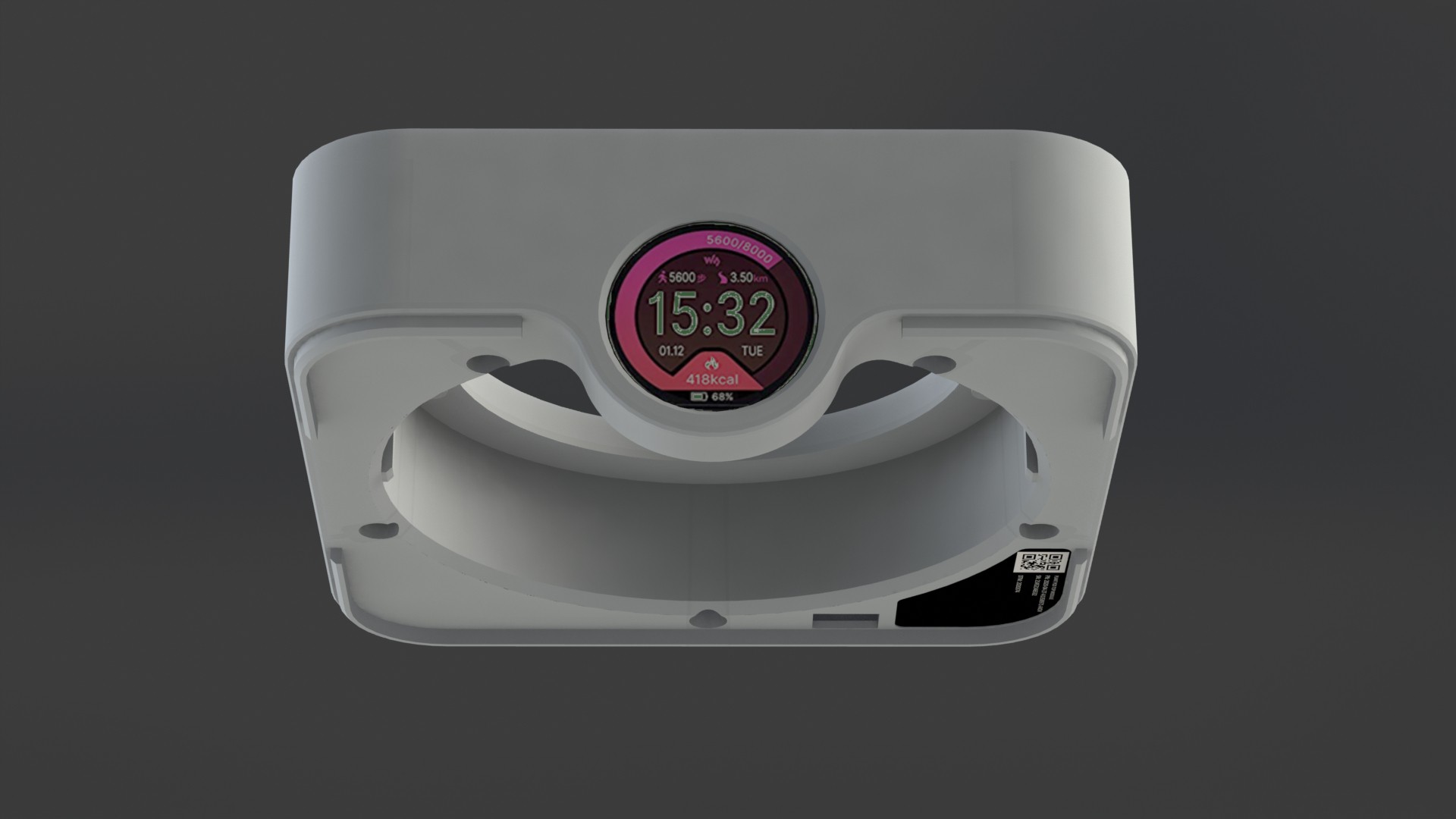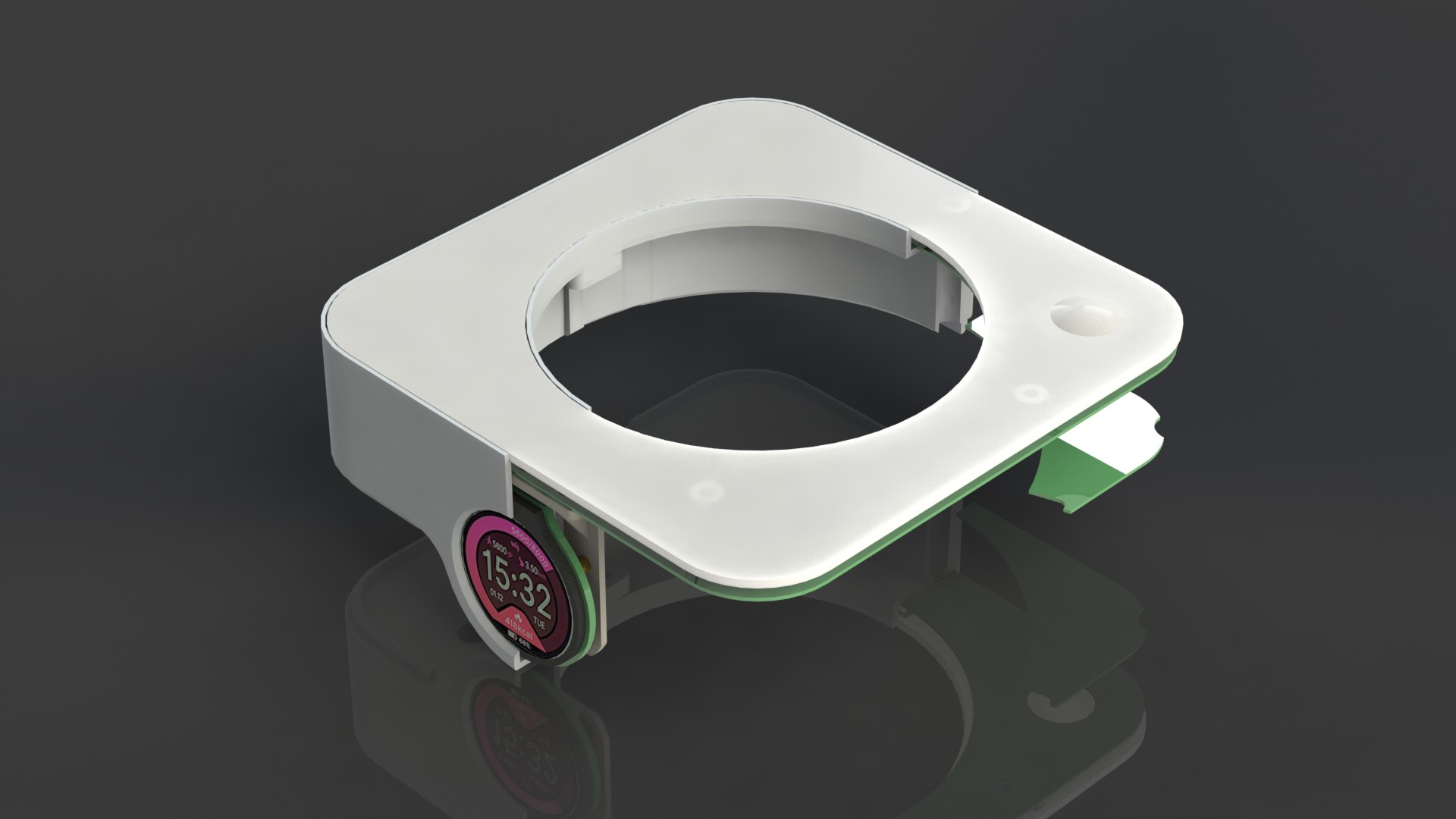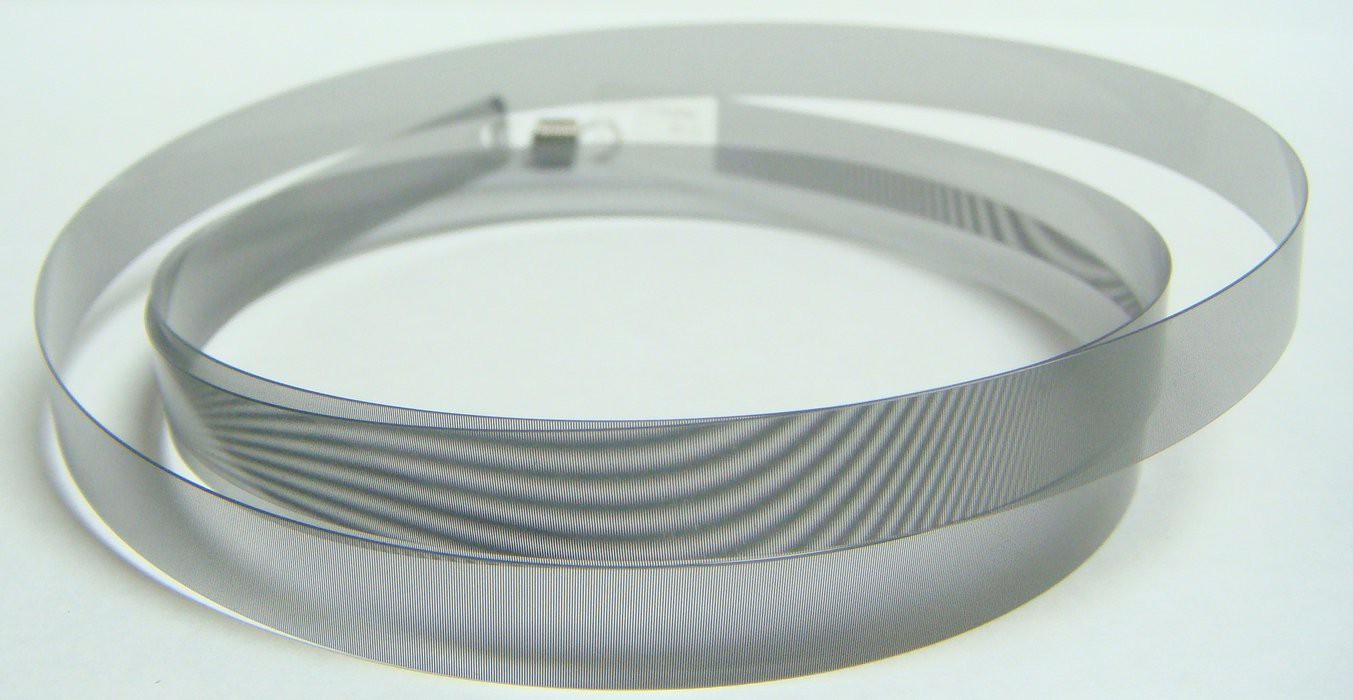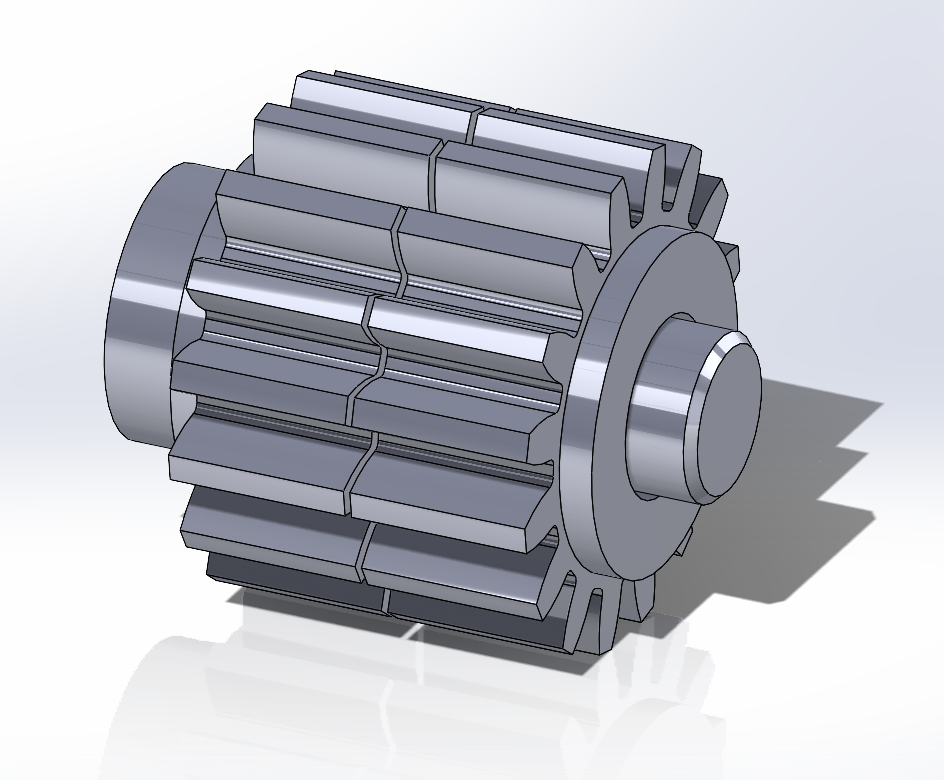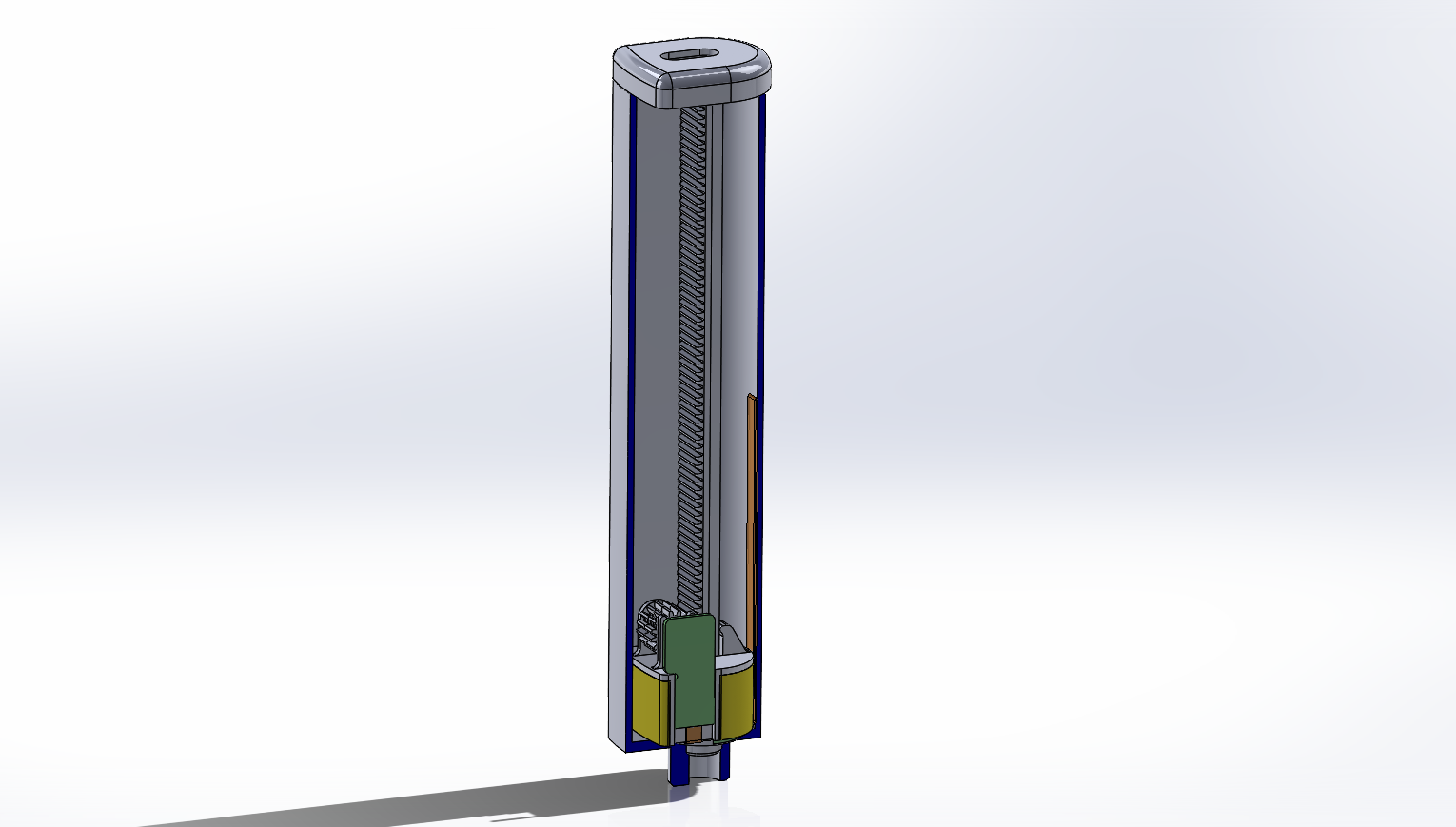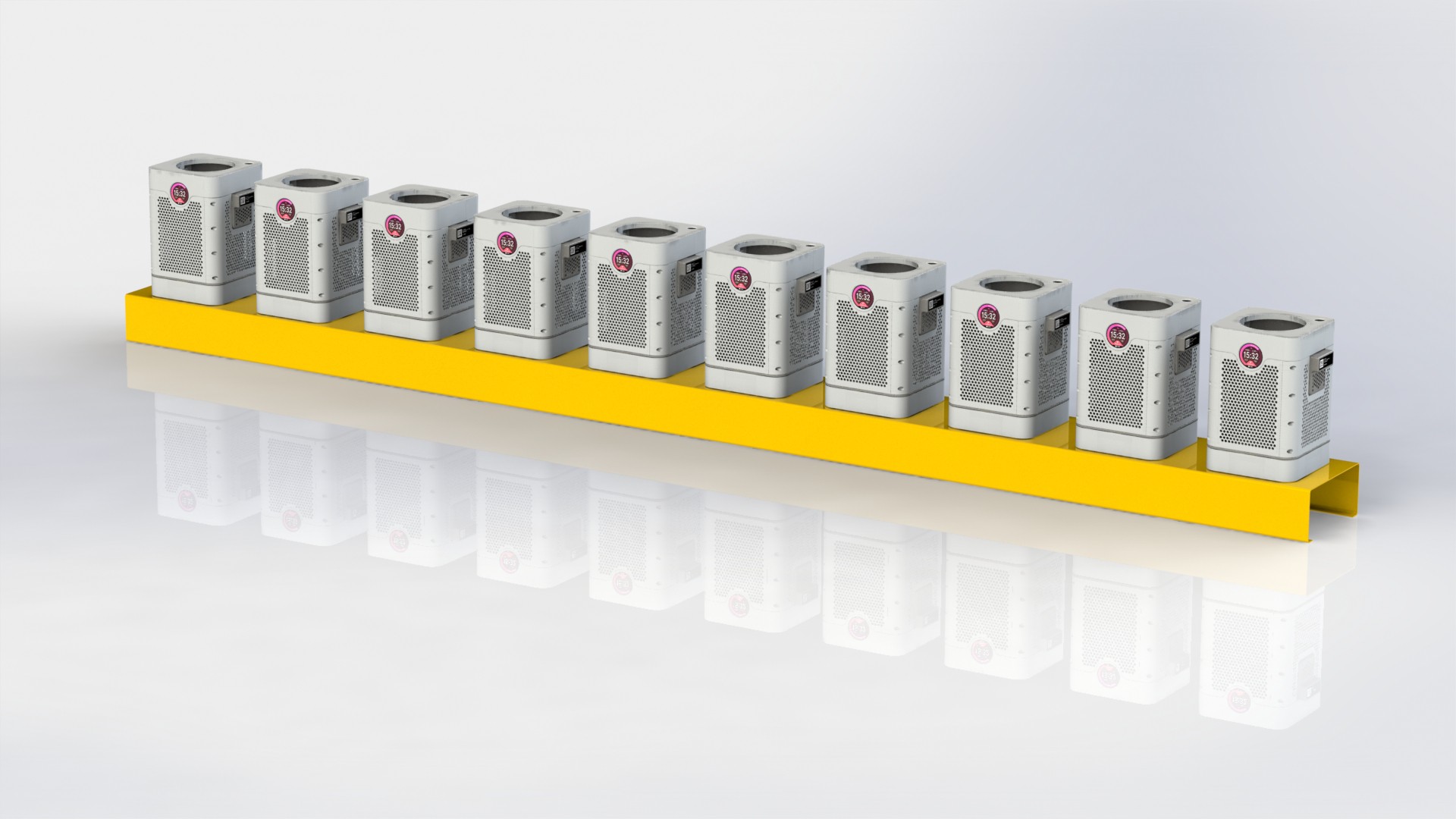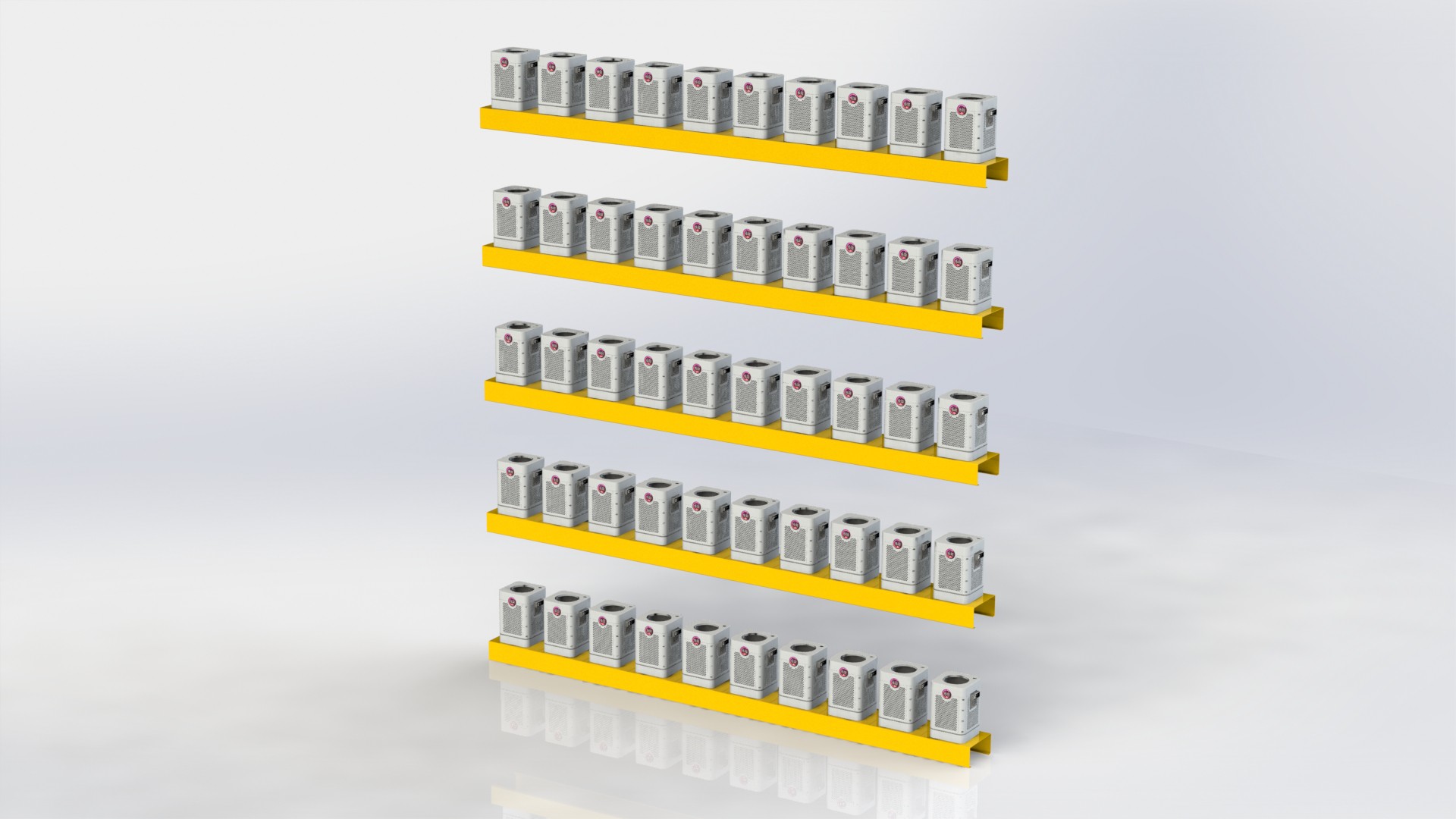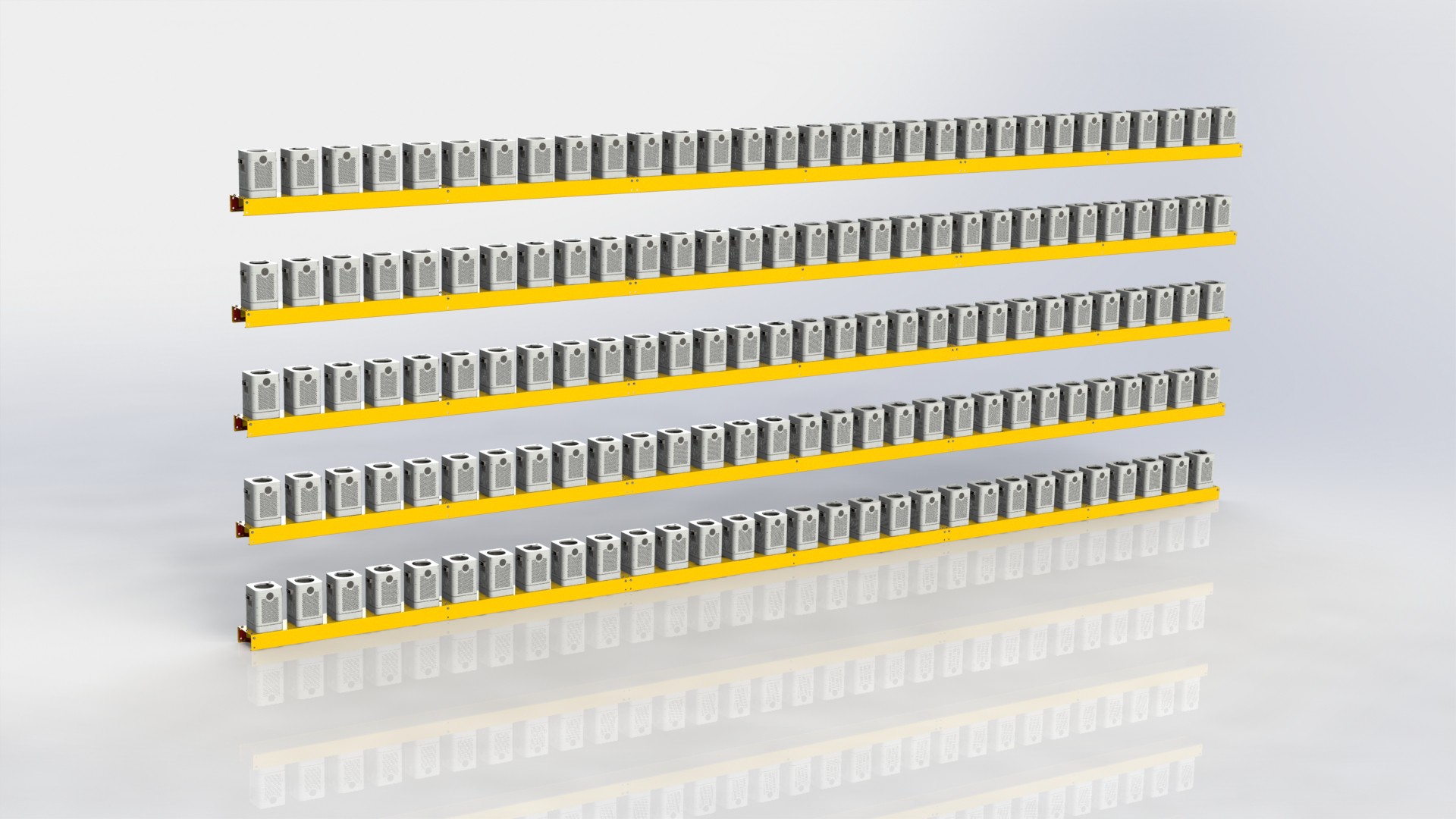-
Grow log - Day 1
09/02/2021 at 20:30 • 0 comments![]()
-
Plant pod V3
08/31/2021 at 06:30 • 0 comments -
Version 3 (Centralization)
08/30/2021 at 08:21 • 0 commentsNew design
One of the primary goals of this project was simplicity and low manufacturing cost, with previous design that goal was hard to achieve, so we changed the design, or rather architecture of the system. In the diagram bellow you can see new system design, the goal here is to reduce total parts count per plant and also reduce total price per plant, so the first thing to do is to dumb down individual Plant pod device. The plant pod device still has sensors for temperature, humidity and barometric pressure, light intensity and specter sensor, low liquid level sensor and piezo transducer. We removed LCD display per plant, moved it to the Plant pod hub and added simple single addressable LED indicator per device. The plant pod hub device now has multiple liquid connections, inputs and outputs, device collects nutrients and water from the system infrastructure, mixes it in corresponding ratio (Per plant) and dispatch it to the Plant pod device, which now has only one liquid connection. This approach allows us to have independent Plant pod device, that you can take with you. For example, imagen roof top garden that you can visit and take the plants you want with you and then place them in the kitchen, ready for usage when you need them. In your kitchen you would only need to supply power for the operation of the piezo transducer (Aeroponic mode). The Plant pod hub now uses two peristaltic pumps instead of the individual electromagnetic valves, removing the need for pressurized system infrastructure.
![]()
After completing these two main parts of the system (Plant pod and hub) we will continue to develop other parts of the system (Infrastructure, environment control, etc.).
Proof of concept
Here are some side projects developed as a tools for POC for the Plant pod project:
Time lapse camera
Using ESP32 CAM board, this allows us to document plants progress during tests. ESP sends pictures directly to Azure blob storage.
![]()
Plant growing module (Space PVC pipe)
These are some PVC pipes used to hold the test plants, we used Al. foil and kepton tape to prevent light ingress to the root area. One will be configured in aeroponic mode, using piezo transducer and the other one will be in hydroponic mode, using air pump to supply oxigen to the plants root system.
![]()
![]()
![]()
The plant pod device V3
Here is some rendering of the work in progress V3 Plant pod device
This is the bottom part of the device, it will also have top part that is connected to it using pogo pins and magnets. Bottom of the device will have electrical and liquid connections with twist on/off action for attaching it and removing from the system. We also included some thermal insulation layer between inner and outer shells of the device itself, to enable lower energy consumption in extremely hot or cold environments.
-
The final sprint
07/09/2021 at 13:13 • 0 commentsThe Plant pod device design is in it's final stage, we have covered all the functionalities, test printed some of the design critical prats and here are some images.
-
Quick release design completed
06/14/2021 at 18:08 • 0 commentsHere are some renderings of the completed Quick release system for the Plant pod . Next step is to 3D print test parts to validate all dimensions and seals, and if that all goes according to plan, next step is to print final versions of the parts.
-
Coil winding
06/12/2021 at 16:45 • 0 commentsLatest attempt to simplify construction of the solenoid part of the eclectic valve/pump...
Here is some aluminum tape cut to width of about 20mm, used in place of magnetic wire. We will test this type of coil further, and post update with the results...
![]()
![]()
-
Cross section
06/04/2021 at 09:03 • 0 commentsHere is the cross section of nearly completed device, Plant pod part, just to be exact :)
-
Plant pod top module
06/03/2021 at 10:57 • 0 commentsHere are some images of the Plant pod top module...
-
Precision you seek my young...
05/20/2021 at 05:38 • 0 commentsThese ware the candidates for sensing liquid level in the Plant pod device:
1. Solid state capacitive sensor
2. Custom encoder strip based (Optical)
3. Custom magnetic encoder based
And the winner is! Custom magnetic encoder based one, and here is why.
- Solid state capacitive sensors are usually designed to sense water level, which isn't the case here. Liquid solution used in this case can have different conductivity levels depending on the chosen solution. They are also sensitive to human presence, non linear and have a level resolution of about 1mm, which in our case is translated to about 11ml of liquid. Here is an example of solid state sensor
![]()
- Custom encoder strip solution uses optical type of the encoder and the bar strip, similar as you can find in the desktop printers. Resolution can be in the range of 0.125mm which translates to a resolution of about 1.375ml. Reading is linear and precise, but considering environment of the operation (Liquid and moisture) we decided that this is not a good choice.
![]()
- Custom magnetic encoder solution. If take an example of 12bit axial magnetic encoder, we get an approximate resolution of 0.08789° per bit, and if we substitute the values in the arc length formula
l = 2πr (θ/360)
for the given gear diameter, we get a result of 0.005mm of horizontal travel resolution which translates to a 0.055ml resolution, not bad, that is pretty precise. And what about accuracy? Well if you take a look on the next picture
![]()
you can see there is a split in the gear. Gear is actually designed to minimize backlash (Spring load between two parts of the gear) and provide best possible accuracy and precision. There is one more thing to solve, and that is an liquid level offset, before EVA foam float starts to move, it needs some minimum liquid level, but this value is tied to the buoyancy, which can be considered constant, and sensor has down position detection, so this value can be automatically compensated by the software.
![]()
Except from measuring exact liquid level in the Plant pod device, this sensor will be used to auto calibrate pump/valve system, that will then also be capable to estimate operation time/number of cycles for the injection of the required amount of the liquid.
-
Industrial application
05/17/2021 at 11:46 • 0 commentsHere are some examples of industrial environment configurations. The smallest unit is 2m long, and has 10 individual Plant pod devices, than that module(unit) can scale both horizontally and vertically. The yellow carrier profile provides structural support for the individual devices, and also a way to route liquid an electrical connection and provide support for light source, artificial, natural or mixed mode lighting.
 Nikola Secerovski
Nikola Secerovski